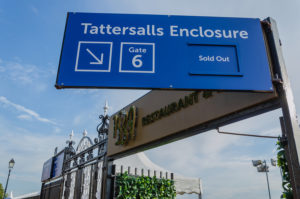
Credit: JohnDavid / BigStock.com
As one of the nation’s favourite sports and one of the most popular for bookmakers, horse racing throughout the UK is a multi-million-pound business. It’ll take just a couple of minutes browsing any of the bigger bookies to see just how big a role it plays within the industry and as a result, there are plenty of races to choose from.
We have compiled a list of all of the major racecourses that are located within the UK. As you can see, with 62 tracks in all, the list is very comprehensive. Some offer higher profile meetings than other, with things like prize money and the quality of racing vary dramatically throughout.
But, one thing that is for certain is that with each of the tracks and the meetings that take place at them, you will be able to bet on all of them. Throughout his guide we will give you a brief overview of what you can expect from each, whether you are simply looking to bet or even planning your next day at the races.
Map of all Racecourses in the UK
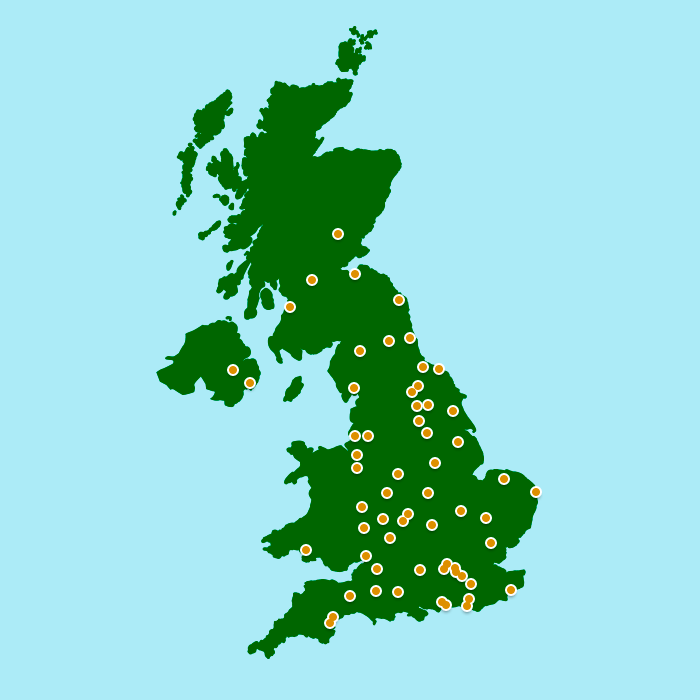
Course Index
- Aintree
- Ascot
- Ayr
- Bangor
- Bath
- Beverley
- Brighton
- Carlisle
- Cartmel
- Catterick
- Chelmsford City
- Cheltenham
- Chepstow
- Chester
- Doncaster
- Down Royal
- Downpatrick
- Epsom Downs
- Exeter
- Fakenham
- Ffos Las
- Fontwell Park
- Goodwood
- Great Yarmouth
- Hamilton Park
- Haydock Park
- Hereford
- Hexham
- Huntingdon
- Kelso
- Kempton Park
- Leicester
- Lingfield Park
- Ludlow
- Market Rasen
- Musselburgh
- Newbury
- Newcastle
- Newmarket
- Newton Abbot
- Nottingham
- Perth
- Plumpton
- Pontefract
- Redcar
- Ripon
- Salisbury
- Sandown Park
- Sedgefield
- Southwell
- Stratford on Avon
- Taunton
- Thirsk
- Towcester
- Uttoxeter
- Warwick
- Wetherby
- Wincanton
- Windsor
- Wolverhampton
- Worcester
- York
A to Z of Racecourses in the UK
Aintree
Ormskirk Rd, Liverpool, L9 5AS | Website
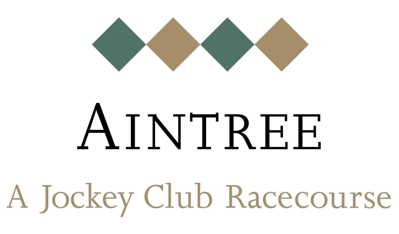 Aintree racecourse is not only one of the most iconic race tracks within the UK, but also the world. The course is hosted within Aintree, which is in Liverpool, England and each year see’s hundreds of thousands of punters descend.
Aintree racecourse is not only one of the most iconic race tracks within the UK, but also the world. The course is hosted within Aintree, which is in Liverpool, England and each year see’s hundreds of thousands of punters descend.
The track is set up for National Hunt races and is best known for hosting the Grand National. The Grand National is the considered to be one of the most demanding races in the world, with horses taking on the gruelling 4m 514-yard circuit. The field is also unique in that it can include up to 40 horses for the race and some of the most iconic names to have won there include the likes of Red Rum, Many Clouds, Mon Mome and Don’t Push It.
The course is also one of the best known, largely because of the Grand National. Unlike many racetracks, the jumps that horses need to navigate over are as iconic as the race itself. The likes of Becher’s Brook, Canal Turn, The Chair and Foinavon are just a few of them. Interestingly, each of the jumps are named after horses or jockeys where there has been a notable incident take place at some time. The jumps are also iconic because of the sheer size, with the largest being that of The Chair, measuring 1.57m in total and is the only jump to have claimed a human life back in 1862.
Whilst the Grand National is the centrepiece for the racecourse, it has several other major meetings throughout the year as well. The most notable is that of the November Meeting, which includes the Grand Sefton Steeplechase and the Becher Chase, to name just a couple.
Aside from horse racing, Aintree has also played host to several other sporting events, including the British Grand Prix in Motor racing, as well as several concerts, with the likes of Michael Jackson, McFly, Pink, The Kaiser Chiefs and The Chemical Brothers all playing at some point.
Ascot
High St, Ascot, SL5 7JX | Website
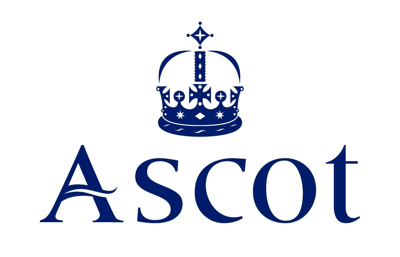 Ascot is another of the more popular courses in the UK and is found within the county of Berkshire. The success of Ascot has mainly been down to affiliation with the Royal Family, who have frequented their for many decades now and even have horses that are trained and raced their on regular occasions
Ascot is another of the more popular courses in the UK and is found within the county of Berkshire. The success of Ascot has mainly been down to affiliation with the Royal Family, who have frequented their for many decades now and even have horses that are trained and raced their on regular occasions
The course is able to host both Flat racing and National Hunt racing, which makes it diverse and also able to run throughout the year, hosting a multitude of the best races in the world. To put it into context, Ascot is host to 13 of the 36 Group 1 races that are held within the UK every year, such is the importance of the track.
The highlight of the race track kicks off in June when they play host to Royal Ascot. As the name would suggest, it’s a special occasion where at least one member of the British Monarchy are in attendance for each of the 5 days that the meeting runs over, which is held throughout June and raced over flats.
The highlight of Royal Ascot has to be that of the Gold Cup, which is held on the Thursday of the meeting and is referred to as Ladies Day. The Gold Cup has been running since 1807, which not only makes it one of the oldest races in the UK, but also one of the most prestigious. Royal Ascot also includes a further 7 Group 1 races to run alongside the Gold Cup, making it the largest number of Group 1 races held at any flat race meeting within the UK.
Over the years the course has seen a number of massive expansions, with the biggest coming in 2006 with a redesign of the main clubhouse, Royal boxes and grandstands.
Ayr
Whitletts Rd, Ayr, KA8 0JE | Website
 Ayr is one of the most picturesque courses in Scotland. The course is based out of Ayr, obviously and has been hosting racing since 1907. The course has been set up to allocate horse racing on both flats and jumps, which makes it open pretty much all of the year to racing.
Ayr is one of the most picturesque courses in Scotland. The course is based out of Ayr, obviously and has been hosting racing since 1907. The course has been set up to allocate horse racing on both flats and jumps, which makes it open pretty much all of the year to racing.
Whilst racing in Ayr is a huge pastime, dating back as far as 1578, it’s widely thought that the first official meetings didn’t take place until 1771, which was located in the Seafiled area of the town. The popularity of racing within the town and across Scotland meant that they were to eventually outgrow the original racing locations, before opting to open a new track in Craige in 1907. Racing has been held here ever since and interestingly, the track is actually based on that of Newbury’s but with a slightly shorter straight, measuring just 6 furlongs compared to the mile long straight at Newbury.
The track is best known for hosting the Scottish Grand National, which is run over 4m 110yard throughout the National Hunt track. Whilst the race isn’t quite as illustrious as the one held at Aintree, the prize money of £215,000 makes it one of the richest horse races in Scotland.
Whilst racing takes place throughout the year, the major meetings take places in April, May, June and September. The September meeting is probably the biggest of the year outside the Grand National and with it includes races such as the Harry Rosebery Stakes, Doonside Cup, Firth of Clyde Stakes and of course, the Ayr Gold Cup.
Interestingly, Ayr Racecourse has been awarded Best Racecourse in Scotland and the North East no fewer than 19 times by the Racegoers Club, including a 9 year stretch up until 2013. Visit Scotland also note the course as a 5 Star visitor attraction for anyone coming into the country and is arguably one of the most important racetracks in Scotland as a result of all this.
Bangor
Bangor-on-Dee, Wrexham, LL13 0DA | Website
 Bangor-On-Dee Racecourse, as it’s officially known, is another racecourse that is steeped in history. They first opened their doors in 1859 and since then have been proud to host horse racing there ever since. The course has been set up as National Hunt track and is widely regarded as a stern test for both jockeys and horses alike.
Bangor-On-Dee Racecourse, as it’s officially known, is another racecourse that is steeped in history. They first opened their doors in 1859 and since then have been proud to host horse racing there ever since. The course has been set up as National Hunt track and is widely regarded as a stern test for both jockeys and horses alike.
The racecourse is a real old-fashioned set up and is a world apart from the likes of Ascot or Aintree. There is no main grandstand to speak of and facilities include just a couple of bars, with a couple of places to grab some food. Many will find themselves sat on the grass or even wooden benches, but this all adds to the charm of Bangor. It allows racegoers to get much closer to the action, with tickets including pretty much all access passes from the paddock to the parade ring and everything in between. You only need to read a few of the TripAdvisor reviews to see just how popular this family-friendly racetrack is.
Whilst they offer some high-quality racing, the course is very popular with local point-to-point meetings and is thought of as one of the best places to go and view these events and races. There are often at least two meetings per month and whilst they don’t have many high-profile races to speak of, they do get some big names that come to race some younger horses, including the likes of trainers such as Jonjo O’Neil, Richard Johnson and Donald McCain.
Interestingly, the course was one of the first in the country to do away with the Tote, instead replacing them with their own in-house betting system called bangorBET, a lead that many higher profile racetracks have now followed.
Bath
Lansdown, Bath, BA1 9BU | Website
 Bath Racecourse has been about since 1811, although racing within Bath has been taking place from as early as 1728. The course itself is based about 3 ½ miles north of Bath, which is located in Somerset, England. The course on offer measures 1m 4 furlongs in total length and runs throughout the summer months, hosting only flat races.
Bath Racecourse has been about since 1811, although racing within Bath has been taking place from as early as 1728. The course itself is based about 3 ½ miles north of Bath, which is located in Somerset, England. The course on offer measures 1m 4 furlongs in total length and runs throughout the summer months, hosting only flat races.
One of the key features about the track is that it’s actually at 283m above sea level, making it the highest flat racetrack in the UK. Whilst the highest, the altitude doesn’t really have any affect on the races and this isn’t something that is taken into consideration when recording times or results from any meetings there.
The facilities at the racecourse saw a massive overhaul in 2015 when construction work started to improve the somewhat sub-standard race offerings. The company behind this was that of Arena Racing Company and this included things like a new parade ring, new dining and drinking areas, a fully stocked new grandstand that were able to now host corporate events even outside of race meetings and a roof garden, where racing can be watched from, forming one of the most prestigious areas of the racetrack.
Each year the course is able to host around 23 meetings, which are run throughout the flat racing season. The highlight of the season comes in the form of the Bath Cup Festival, which is as much a celebration of the city as it is the horse racing. On top of that they are also able to host a number of events outside of racing, such as music festivals including the likes of James Blunt, Tom Grennan and several others.
Beverley
York Rd, Beverley, HU17 8QZ | Website
 Beverley racecourse is hosted in the market town of Beverley, which is based in East Riding of Yorkshire. The course is one of the most community-driven tracks in the country and the company in charge of running events and race meetings are actually a not-for-profit company, meaning that all funds go directly back into the racecourse to maintain and improve.
Beverley racecourse is hosted in the market town of Beverley, which is based in East Riding of Yorkshire. The course is one of the most community-driven tracks in the country and the company in charge of running events and race meetings are actually a not-for-profit company, meaning that all funds go directly back into the racecourse to maintain and improve.
Racing has been taking place in Beverley since 1767 and this makes it one of the oldest racing towns in the UK. As the course is only set up for flat racing, it means that meetings there take place between April and September, which coincide with the start and finish of the flat racing season.
The track itself is a right-hander and measures 1 mile 3 furlongs, which is actually fairly short, even for a flat racing layout. What’s iconic about the track is that it includes a strong uphill finish, which is often something that catches both riders and horses out, especially if they are new to the track in any way. It’s also a track that is extremely draw bias, with horses being drawn on the inside noted as having a much bigger advantage given that the track actually sloes away to the outside of the track, accentuating the steep uphill finish even more.
Race meetings aren’t all that prestigious in the grand scheme of racing within the UK and are much more family orientated than most, but the two standout races throughout the year have to be that of the Hilary Needler Trophy in the May meeting and the Beverley Bullet Sprint Stakes in the August meeting. The latter comes with a £50,000 prize pool and has been running since 2004, taking advantage of the fast, yet brutal 5f sprinter course.
Brighton
Freshfield Rd, Brighton, BN2 9XZ | Website
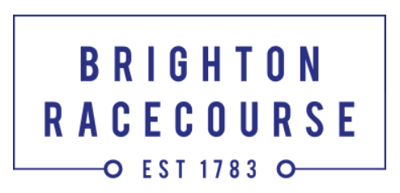 The South Coast of England plays host to one of the UK’s most picturesque racecourses. Brighton Racecourse has seen racing on the site since 1783 and whilst it looks very different now to then, the coastal views across the downs make it a simply stunning site for racegoers.
The South Coast of England plays host to one of the UK’s most picturesque racecourses. Brighton Racecourse has seen racing on the site since 1783 and whilst it looks very different now to then, the coastal views across the downs make it a simply stunning site for racegoers.
The layout is that of a one and half mile-long track, which is one of the smaller tracks within the UK. Even though the track is small, it’s actually shaped into a horse shoe, which makes it one of very few tracks to not be a full circuit. In fact, it often gets coupled with that of Epsom racecourse for this exact reason.
The finishing straight is one of the smallest and as a result, measuring just 4 furlongs in length. The straight comes with a steep decent and then a slight climb as the horse’s head for the line. Whilst it may seem fairly negligible watching the race, it’s actually quite tough of horses as the change from down to up is one that not all are able to cope with and can cause them to miss a stride. Whilst only flat racing is now run at the track, it has been known to host hurdle racing at one point as well, extending the track across to the adjacent golf course creating a possible four-mile race that included a loop and running the track in the opposite direction.
Brighton doesn’t really offer an awful lot in terms of prestigious races. In fact, they are one of the smallest when it comes to prize money, averaging just £26,349 per meeting, with only Southwell, Chepstow and Folkestone offering less. But, the Brighton Festival is one that gets a good gate through the doors and is widely regarded as the main meeting at the track, hosted in August. The biggest race from the meeting is that of the Brighton Mile Challenge Trophy Handicap, which has been hosted by brewers, John Smith’s since 2003.
Carlisle
Durdar Rd, Carlisle, CA2 4TS | Website
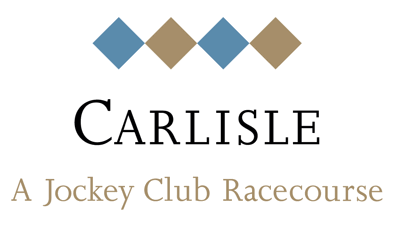 Carlisle is one of the most consistent racetracks in the UK. By this we mean that it holds meetings throughout the year, with both Flat and National hunt races being ever-present. The site has held racing since 1904, which actually makes it relatively “new” compared to some tracks, although is still well over 100 years old.
Carlisle is one of the most consistent racetracks in the UK. By this we mean that it holds meetings throughout the year, with both Flat and National hunt races being ever-present. The site has held racing since 1904, which actually makes it relatively “new” compared to some tracks, although is still well over 100 years old.
The site is based in Blackwell Village, which is small area of Carlisle, itself based in the county of Cumbria, not far from the Scottish border. The course measures 1m 4f in total length and is a full track, which works well for the longer National Hunt races that are held there throughout the winter months and adapted for the shorter flat races held throughout the summer months.
The track’s most notable for having a steep uphill finish, which can be brutal in the longer races. It’s also fairly common, given that it’s based in the north, to having very heavy ground throughout the winter, which makes the going tough for horses. Many trainers will take younger horses to Carlisle to adapt them for longer based races and also to get used to slightly softer ground than they would the further south of the country they might reside.
Carlisle is a famous course for being the first racecourse on British soil to host pool betting at the racetrack in 1929. There seems to be little reason as to why, but it’s a nice claim to fame regardless.
In terms of racing, the most prestigious race has to be that of Carlisle Bell which is run over the flat course in June. The reason that the race is so iconic is that it’s one of the oldest flat races in the world, first being running in 1599 and is still running today. Other notable races include the Eternal stakes, ran on the same day as the Carlisle Bell and the ApolloBet Mares’ Chase, which is the feature of the November meeting.
Cartmel
Grange-over-Sands, LA11 6QF | Website
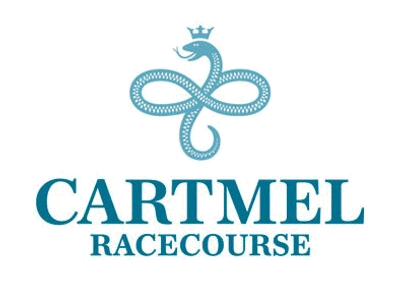 Cartmel Racecourse[/caption]Cartmel might not be the first course that you think of when it comes to National Hunt racing, but it’s actually one of the most important in the calendar. The track is based in Carlisle and whilst faces competition from Carlisle Racecourse, is one of very few counties that have two thriving tracks to host.
Cartmel Racecourse[/caption]Cartmel might not be the first course that you think of when it comes to National Hunt racing, but it’s actually one of the most important in the calendar. The track is based in Carlisle and whilst faces competition from Carlisle Racecourse, is one of very few counties that have two thriving tracks to host.
The importance of the meeting is the sheer scale and with-it see’s over 20,000 visitors flock to the track for some of the major meetings. These numbers are bettered only two other jumps-specific track in the country in terms of total volume of numbers throughout the year. What’s more impressive is that only 9 race days are held each year, vastly less than the majority of tracks within the UK.
The grounds are pretty unique as well in that the majority of fans will be based within the circuit, with racegoers having to dissect the home straight in order to get in. The paddock and winner’s enclosure are both held within the track, whilst adjacent is a massive fairground, that families often take advantage of throughout the meeting.
The first meeting of the year takes place in May and is probably the biggest. It’s run over 5 days, but it’s highly unique in that there is a rest day between the 2nd and 3rd day to allow visitors to go off and enjoy the Lake District countryside. Also, given that people flock to the course very early and leave very late, the time for clean up between the days is very minimal. Often visors will make a pilgrimage to the village of Cartmel as well, sampling local bars and restaurants, making it a vibrant place to be on race weekend.
The track is another iconic feature and holds the longest finish in Britain for steeplechasing, measuring a massive 4 furlongs in length. Notable winners on the Cartmel track of late include the likes of Soul Magic, who won an impressive 7 times up to 2014.
Catterick
Catterick Bridge, Richmond, DL10 7PE | Website
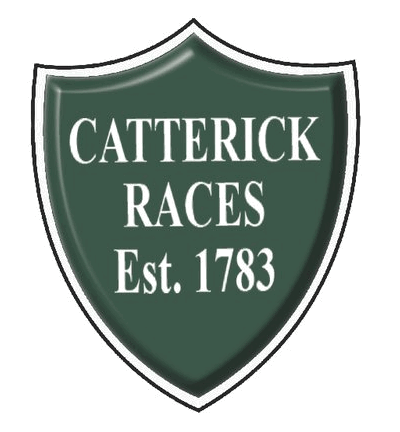 Racing at Catterick dates back as far as 1783 and with it has seen some illustrious horses win there. This includes the likes of Collier Hill, who’s first win came at Catterick, before going on to win 6 majors, including the Stockholm Cup International, Irish St./ Leger and the Hong Kong Vase.
Racing at Catterick dates back as far as 1783 and with it has seen some illustrious horses win there. This includes the likes of Collier Hill, who’s first win came at Catterick, before going on to win 6 majors, including the Stockholm Cup International, Irish St./ Leger and the Hong Kong Vase.
The track is based in the market town of Catterick, which is in North Yorkshire. Interestingly, the course plays host to the largest Sunday market in the North of England.
The track measures just over a mile for a complete circuit and is often one that is undulating and pretty unforgiving. The track is actually on a base of gravel subsoil, which means that drainage is excellent, resulting often in good ground, even throughout the winter months where National Hunt racing takes over from the flat racing season. Whilst not one of the more glamourous racing spots on the calendar, Catterick is able to offer a certain old-school charm that many regular visitors simply love.
The biggest race that is held at Catterick each year has to be that of the North Yorkshire Grand National. The race is held in January and is usually a part the first meeting of the calendar year at the track. Whilst the track is one that dries well, it has been rumoured that Catterick would be switching to all-weather racing in the not too distant future as a way to save money on maintenance costs, albeit limiting some of the racing that is currently on offer.
Chelmsford City
Chelmsford, CM3 1QP | Website
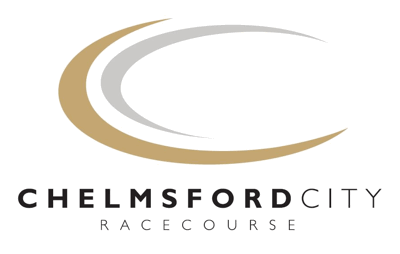 Chelmsford City racecourse was first opening in 2008. Interestingly, the course was the newest track to be opened in the UK since that of Taunton in 1927, which is a staggering fact when you think about how many tracks there now are. But, it failed to really kick on and just 12 month later, went into administration with the doors shut.
Chelmsford City racecourse was first opening in 2008. Interestingly, the course was the newest track to be opened in the UK since that of Taunton in 1927, which is a staggering fact when you think about how many tracks there now are. But, it failed to really kick on and just 12 month later, went into administration with the doors shut.
To be honest, the track was never ready when it was first opened, with many claiming that vast majority of the track and facilities were left unfinished. When it reopened again in 2015, these issues had been addressed. Betfred owner, Fred Done, is said to have played a key role in reopening the track.
The course itself is open throughout the summer months and includes exclusively flat races in that time. It’s 8.5-furlong track is one of the shorter ones in the country, but it’s Polytrack base (mixture of synthetic sand and wax) means that conditions are very consistent throughout the season. As it’s based just 50 miles from Newmarket, one of the biggest horse racing training centres’ in the world, the track is starting to become highly popular, with a grandstand that holds up to 10,000 at any one time.
The biggest meeting of the year comes in June and this is often referred to as their Summer event, although this is one of many. The standout race is that of the Queen Charlotte Fillies’ Stakes, which is a listed race that is run over 7f and comes with a prize pool of £75,000, the largest of any race at the racecourse.
Cheltenham
Evesham Road, Prestbury, Cheltenham, GL50 4SH | Website
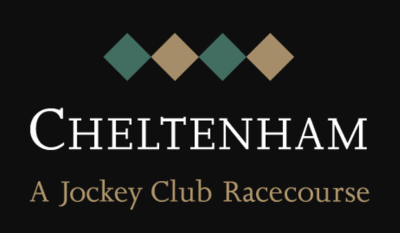 There are few more iconic racetracks in the world, let alone the UK than Cheltenham. The track is found within the town of Cheltenham at Prestbury Park, which is based in the county of Gloucestershire and is owned by the Jockey Club Racecourses. The course features exclusively National Hunt racing and is widely regarded as one of the best set-ups in the industry.
There are few more iconic racetracks in the world, let alone the UK than Cheltenham. The track is found within the town of Cheltenham at Prestbury Park, which is based in the county of Gloucestershire and is owned by the Jockey Club Racecourses. The course features exclusively National Hunt racing and is widely regarded as one of the best set-ups in the industry.
Cheltenham is best known for the hosting of the Cheltenham Festival, which is held in March. The festival is littered with Group 1 Races and has the highest number of races within one meeting than any other National Hunt event in the country.
Some of the most iconic races include the likes of the Cheltenham Gold Cup, Champion Hurdle, Queen Mother Champion Chase and Stayers’ Hurdle. Whilst the Festival is one of the biggest, it’s largely set up by the fact that over 67,000 spectators flock to the course for the festival each day, which is more people than some tracks see over the course of the entire year, to put that into some perspective.
The courses are split into two; the old course and the new course. One of the main characteristics of the new course is the fact that the majority of the jumps are taken on at the start of the race. In fact, only 2 hurdles are found in the last 7 furlongs, which is very rare for steeplechase and hurdle races a alike.
The course has seen a fair bit of renovation over the years and facilities are deemed to be some of the best as a result. The Princess Royal Stand was opened back in 2015 at a cost of £45million, increasing capacity by 6,500. On top of that the course also holds one of the largest Auditoria in the South West of England, The Centaur. This holds seating for up to 4,000 and often hosts concerts and events outside of race meetings.
Chepstow
St Lawrence Rd, Chepstow, NP16 6BE | Website
 Racing in Chepstow has been taking place since 1892 and whilst not at the exact lactation of the current track, not all that far away. The course is based in the town of Chepstow, which is in Wales and very close to the border with England. The racetrack is currently owned by that of the Arena Racing Company, who own 16 tracks throughout the UK in total.
Racing in Chepstow has been taking place since 1892 and whilst not at the exact lactation of the current track, not all that far away. The course is based in the town of Chepstow, which is in Wales and very close to the border with England. The racetrack is currently owned by that of the Arena Racing Company, who own 16 tracks throughout the UK in total.
Chepstow is a massively important racetrack as it’s home to the richest race in Wales, the Welsh Grand National. The race takes place in December, several months before that of the original Grand National and is seen as a great curtain raiser for the main event with trainers testing horses to see how they fair over the 5m 5 ½ furlong track. The purse of £150,000 also makes it one of the most lucrative races to be held at the track.
The track is made up of a full circular oval and includes both National Hunt racing throughout the winter months as well as flat racing throughout the summer months. The length of the track is around 2 miles, but there is a full mile course that is connected for the flat races. With 32 meetings held throughout the year, it’s one of the countries busiest racecourses and with it includes prestigious races such as the Totepool Jumps Season Opener (£300,000 purse), Tote Silver Trophy (£50,000) and the Persian War Novices (£35,000), to name just a few. The only Group 1 race to take place at the tack is that of the Finale Juvenile Hurdle, which takes place over hurdles as part of the Christmas meeting on the 27th December.
The track has also played host to several other entertainment events, with music performances from the like of Madness, Tom Jones, UB40, Simply Red, Peter Andre and Feeder, to name just a few.
Chester
Chester, CH1 2LY | Website
 Whilst one of the most beautiful courses in current circulation in the UK, Chester racecourse is also one of the most important. It’s thought that the course is the oldest that is still in operation today, with horse racing being dated back to the site as early as 1539. Whilst the settings have changed dramatically since then, they have been keen to keep the layout of the track very similar to how it was and as a result, is one of the smallest measuring just 1m and 1 furlong.
Whilst one of the most beautiful courses in current circulation in the UK, Chester racecourse is also one of the most important. It’s thought that the course is the oldest that is still in operation today, with horse racing being dated back to the site as early as 1539. Whilst the settings have changed dramatically since then, they have been keen to keep the layout of the track very similar to how it was and as a result, is one of the smallest measuring just 1m and 1 furlong.
The course opens it doors throughout the summer months and as a result only runs that of flat racing, although has been known to host both Flat and National Hunt at one point in time. Due to the courses proximity to Chester City Center, it makes meetings very popular throughout the year. Punters are literally able to walk to and from the centre, meaning that bars, hotels and restaurants are highly accessible, making for a greet ay out for many race goers.
The track is one of the trickier ones to navigate, especially for horses who have long strides. This is because the straight is very short, measuring just 239 yards in total length, meaning that the sprinters are often at a disadvantage at the track.
The May Meeting is the highlight of the year at Chester Racecourse. Held over three days, the calibre of racing is as high as you will see. It’s headlined by the Group 2 ranked Huxley Stakes, but it also includes the likes of the Chester Cup, Cheshire Oaks, Chester Vase, Ormonde Stakes and the Dee Stakes, to name just a few.
Doncaster
Leger Way, Doncaster, DN4 5DY | Website
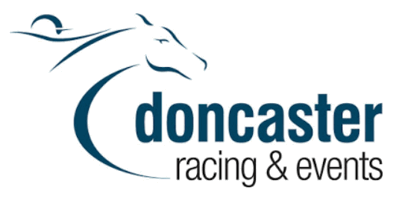 Doncaster is another of the better-known race tracks in the UK. Racing has been taking place a the South Yorkshire location since 1595 and as a result, makes it one of the oldest tracks to still be used today.
Doncaster is another of the better-known race tracks in the UK. Racing has been taking place a the South Yorkshire location since 1595 and as a result, makes it one of the oldest tracks to still be used today.
Whilst the track is iconic, it’s best known for the hosting of 2 of the 36 Group 1 races that are held in the UK every year. These are The Doncaster Cup and the St Leger Stakes. The Doncaster Up has been running since 1766. The race is actually the oldest running regulated horse race in the world, such is its importance within the sport. The race is a part of the British Stayers’ Triple Crown, alongside that of the Goodwood Cup and the Ascot Gold Cup.
The St Leger is another massive race that is hosted at Doncaster. This has been running since 1776 and as a result is now the world’s oldest Classic horse race. The race comes with a £700,000 purse, making it one of the richest flat races in the UK and making part of the English Triple Crown, which also includes the 2000 Guineas and the Derby.
Whilst these two races are the standout, there are a plethora of other races to choose from which are just as strong, including the likes of the Park Hill Stakes, Champagne Stakes and the Racing Post Trophy. The course is also set up to signify both the start and the finish of the flat racing season on turf in March and November, respectively.
The track itself is one of the longest in the country, measuring 1m and 7 furlongs around the circular track. The “Bawtry Road straight” is one of the most iconic in racing and includes 3 relatively quick fences, this coupled with several fences with water and open ditches, make it a tricky ride for both horses and jockeys alike.
Down Royal
Gravelhill Rd, Lisburn, BT27 5RW | Website
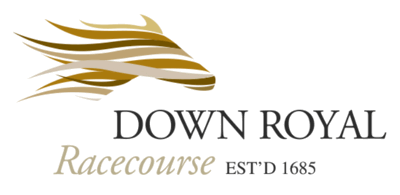 Down Royal is a racecourse that can be found in Lisburn, Northern Ireland. The track is a rather beautiful offering and it’s been around since the late 18th Century. What’s rather iconic about the track is that even though it’s based in Northern Ireland, it’s actually governed by that of the Horse Racing Ireland, due to the divide between that of a Great Britain/Ireland basis.
Down Royal is a racecourse that can be found in Lisburn, Northern Ireland. The track is a rather beautiful offering and it’s been around since the late 18th Century. What’s rather iconic about the track is that even though it’s based in Northern Ireland, it’s actually governed by that of the Horse Racing Ireland, due to the divide between that of a Great Britain/Ireland basis.
The track is open all year round and with it see both hurdle and flat racing take place. The town of Lisburn is a buzz with race meetings taking place, mainly because of the proximity of the course and the town itself. Many people take advantage of the warm Irish hospitality and stay over in the town before enjoying a day’s racing.
As the name would suggest, the course does have Royal pedigree involved. It was King James II in 1685 who issued Royal Charter and formed the Down Royal corporation of Horse Breeders. In 1750 King George II then donated £100 to the cause in exchange to run some of his horses at the racetrack. To this day, the Majesty’s Place is still run as part of the July meeting.
The highlight of the racetrack occurs in November at their Autumn meeting where they are able to host the Group 1 Champion Chase. The race is run over 3 miles and comes with a purse of £140,000, by far and away the biggest Down Royal. The event is fairly new in that it first ran in 1999, but it has included some of the all-time greats to have won it, including Kauto Star, Beef or Salmon and Don Cossack, highlighting the calibre of the fields on show. Other notable races include the Skymas Chase, WKD Hurdle, Down Royal Mares’ Novices’ Hurdle and the Ulster Derby (Flat).
Downpatrick
Ballydugan Rd, Downpatrick, BT30 6TE | Website
 The Downpatrick racetrack is one of just two horse racing tracks within Northern Ireland (the other being Down Royal). The track is located in County Down and there has been competitive racing at the track dating back as far as 1685. Just like Down Royal, even though the course falls under the blanket of being in the UK, it’s actually governed by that of the Horse Racing Ireland authority, as opposed to the British Horseracing Authority. This is mainly because of geographical ease than anything else and the fact there are only 2 courses within Northern Ireland, so it makes sense.
The Downpatrick racetrack is one of just two horse racing tracks within Northern Ireland (the other being Down Royal). The track is located in County Down and there has been competitive racing at the track dating back as far as 1685. Just like Down Royal, even though the course falls under the blanket of being in the UK, it’s actually governed by that of the Horse Racing Ireland authority, as opposed to the British Horseracing Authority. This is mainly because of geographical ease than anything else and the fact there are only 2 courses within Northern Ireland, so it makes sense.
Racing is only held in the form of National Hunt, like so many of Ireland’s courses. In fact, the heritage of this type of horse racing means that there are very few flat meetings throughout either Northern Ireland or Ireland.
The track is only open from March to October and in that time, they have a very family-friendly orientated festival plan. The highlight comes in form of the Ulster National Race day, which includes the Ulster National Handicap Chase as the main race, run over 3 miles and 4 furlongs.
The 1 ¼ mile track is relatively small and it’s very tight, meaning that larger field races can be highly competitive as a result. Whilst the calibre of racing over the year might not be as high as some tracks, they have been greeted with some great horses over the years, including Caughoo, winner of the 1974 Grand National and Rhyme and Reason, the winner of 1988 Grand National. The strong local following that the track receives sets it apart from so many and makes Downpatrick a truly unique racing atmosphere.
Epsom Downs
Epsom, KT18 5LQ | Website
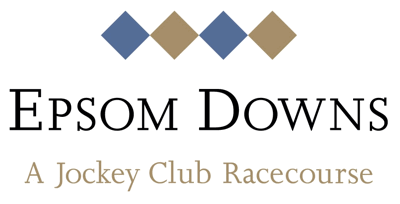 Epsom is another one of the racecourses that are simply synonymous with the sport. There have been racing in the area since 1661 and with it has grown into huge importance within the sport. In fact, the course is often frequented by members of the Royal Family, more specifically the Queen as she enjoys the Derby, which is one of the largest races in the world.
Epsom is another one of the racecourses that are simply synonymous with the sport. There have been racing in the area since 1661 and with it has grown into huge importance within the sport. In fact, the course is often frequented by members of the Royal Family, more specifically the Queen as she enjoys the Derby, which is one of the largest races in the world.
The grounds that the Epsom Downs lies on means that it can accommodate a staggering 130,000 in a single days racing. Granted, a good number are on lookers from the surrounding Downs, where many people can pitch up for free and enjoy some amazing races. In fact, it’s been known that this area is as popular with the locals as actually being within the racing grounds.
There are three Group 1 races held at the course, which runs exclusively for the flat season. The races include The Oaks, The Coronation Cup and The Derby. It’s the latter that is probably the most famous of them all though, with The Derby being Britain richest horse race with a purse of £1.5million. It’s also part of the British Triple Crown that include the 2000 Guineas and the St Leger, falling in between the two. In fact, the Derby is linked with a plethora of other Group 1 races around the world, such as the Kentucky Derby, for example.
The course is actually U-shaped, with several cutes that run off around the track in order to accommodate different distances for different races. Horses will start with a strong ascent to the top of the hill, before a sweeping left turn and picking the pace as they head downhill towards the finish line. As a result, sprint races tend to be much faster than the majority of flatter tracks, slightly offsetting times over these distances.
Exeter
Kennford, Exeter, EX6 7XS | Website
 Set within the Devonshire coastline, Exeter racecourse is one of the better-looking courses within the UK and has a long history within the sport. Racing has occurred on the site since the middle of the 17th Century and up until the early 1990’s was known officially as the Devon and Exeter Racecourse.
Set within the Devonshire coastline, Exeter racecourse is one of the better-looking courses within the UK and has a long history within the sport. Racing has occurred on the site since the middle of the 17th Century and up until the early 1990’s was known officially as the Devon and Exeter Racecourse.
It’s set out as a National Hunt track and interestingly is the highest racecourse in the UK at 260m above sea level. It’s based at the top of the Haldon Hills and offers stunning panoramic views. The course itself is 3miles in total distance, which includes a 2mile oval course along with the 1mile flat course that was later added. 11 fences in total make up the course and with it comes two open ditches and one water-based jump.
The course is probably best known for its running of the William Hill Gold Cup Chase that is run within the November meeting. This Grade 2 race is run over 2m 1f 110y and is for 4-year olds and up. Three-time Ascot Gold Cup winner, Best Mate, tragically died at the racetrack in 2005 after a suspected heart attack.
The course includes three stands in total, Haldon, Anstey and Brockman. The Haldon was famously opened by that of Anne, Princess Royal in 2004 and is one of the more luxurious sections of the racetrack. With it are bars and restaurants, named after Best Mate and desert Orchid, respectively. Other respects have been made to Best Mate around the enclosure, including a bronze statue of the horse in the paddock.
Fakenham
Fakenham, NR21 7NY | Website
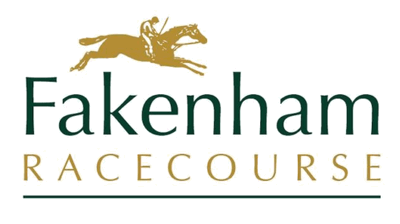 Fakenham racecourse has been existence for just over 100 years now, which actually makes it one of the newest courses in the UK. It’s based in Norfolk and whilst it’s a small site compared to most, is a massively popular racetrack, especially with that of the locals who come out in their droves to support the local site.
Fakenham racecourse has been existence for just over 100 years now, which actually makes it one of the newest courses in the UK. It’s based in Norfolk and whilst it’s a small site compared to most, is a massively popular racetrack, especially with that of the locals who come out in their droves to support the local site.
Even though they are able to get a decent standard of racing there, the track only has 8 meetings per year, but each well supported. It’s very different from a lot of the bigger sites in that visitors are able to get access to paddocks, winners enclosure, parade rings and pretty much the whole course with their tickets. Families are often encouraged to turn out, with activities for children being a high priority on race days.
The course is again quite small, measuring just under a mile in total distance with 6 fences in total. Interestingly, the shape of the track is almost a square and locals state that as a result, any horses that aren’t in first few when turning for home will find it difficult to carve out a decent finish, such is the severity of the turn and the bunch of horses as they turn.
The countries top trainers often frequent the course though, with the likes of Nicky Henderson and Even Williams being two of the most prolific winners at Fakenham recourse. Jockey’s that have seen continued success on the track include the likes of AP McCoy and Richard Johnson.
The track also includes a number of point to point’s over the year as well, with the biggest coming in the form of the West Norfolk Hunt’s Point to Point.
Ffos Las
Culla Rd, Trimsaran, Kidwelly, SA17 4DE | Website
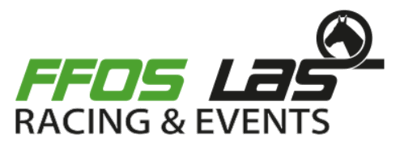 The Ffos Las racecourse was only opened in 2009 and is currently set in the Welsh county of Carmarthenshire, in the south of country. It’s been one of the more exciting projects to develop within the industry over the last 20 years or so, with it being one of just a handful of new courses to open since the turn of the Millennium.
The Ffos Las racecourse was only opened in 2009 and is currently set in the Welsh county of Carmarthenshire, in the south of country. It’s been one of the more exciting projects to develop within the industry over the last 20 years or so, with it being one of just a handful of new courses to open since the turn of the Millennium.
The location of the track came about after mining operations had ceased and new tenants were set to be found. The construction of Ffos Las meant that it became just the third National Hunt racecourse in Wales and the first to be constructed in the UK for almost 80 years at the cost of £20million. As a result, the process was very new to everyone involved, but even at this relatively early stage, reports have been positive.
The site had a huge number of amenities added to it, such as turfed track, useable for both flat and National Hunt racing, enclosure and grandstand, hotel, pubs, restaurants, betting facilities and even residential facilities for its staff. The track measures just 12 furlongs in total length, but it’s very flat which offers a very fair race set up.
The opening season saw the track commission with 8 races in total, a number that increased by one due it’s immediate popularity. The meeting saw a sell-out crowd of 10,000 people turn up and was an evening National Hunt meeting spread across 2 days and included a Ladies night.
Since then the track has gone on to host races such as the Welsh Champion Hurdle, that’s run over 2 miles and takes place in October. Oscar Whiskey is probably the best-known horse to have won this race back in 2011. As it stands, future plans have already been set afoot to increase capacity for up to 20,000 people, upgrading facilities and to accommodate up to 120 horse boxes in order to gain more traction for more events throughout the year.
Fontwell Park
Fontwell Ave, Fontwell, Arundel, BN18 0SX | Website
 Fontwell Park has been open since 1924 and with it is based within the West Sussex countryside of Fontwell. The surroundings are simply stunning and whilst not one of the better-known tracks for most casual horse racing fans, a must see nevertheless. The site is owned by ARC Racing and its they who have been able to invest the money to get facilities improved, such as an £6.5million grandstand opened in 2011.
Fontwell Park has been open since 1924 and with it is based within the West Sussex countryside of Fontwell. The surroundings are simply stunning and whilst not one of the better-known tracks for most casual horse racing fans, a must see nevertheless. The site is owned by ARC Racing and its they who have been able to invest the money to get facilities improved, such as an £6.5million grandstand opened in 2011.
The mastermind behind the racecourse is that of Alfred Day who brought racing here in 1924. After he had finally been able to accumulate enough land to open, there were initially two tracks for hurdles and steeplechase. What was unique about the steeplechase track is that they ran it as a figure of 8, running through the middle and in turn utilising more of the somewhat limited space that was needed for site.
The course is famed for being the place where Queen Elizabeth II, then Princess Elizabeth, had her first professional win, in the form of Monaveen at the Chichester Handicap Chase in October 1949.
In terms of racing at the track, the highlight of the year has to be that of the National Sprint hurdle, which is run as part of their February meet, not long before the end of the National Hunt season. It’s a Grade 2 race run over 2m 4f and with jockeys such as Tom Scudamore, Tony McCoy, Richard Dunwoody and John Francome have all had success in the race. Another notable race includes the Southern National, which is a Class 3 Chase race run over 3m 3f and one of the longest races that’s held at Fontwell Park.
Goodwood
Selhurst Park Road, Chichester, PO18 0PS | Website
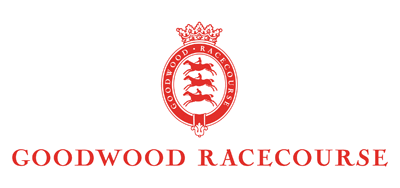 In terms of racing in the UK, few tracks are better known than that of Goodwood. Situated in Chichester, West Sussex, the track plays a huge part of the British flat racing season and also plays host to 3 Group 1 races. In fact, all three of these races are held in the Glorious Goodwood festival that takes place across late July-early August every year. It’s one of the most stunning racecourses when at full bloom and is really able to showcase not only what the course is like aesthetically, but also the calibre of racing that’s on offer.
In terms of racing in the UK, few tracks are better known than that of Goodwood. Situated in Chichester, West Sussex, the track plays a huge part of the British flat racing season and also plays host to 3 Group 1 races. In fact, all three of these races are held in the Glorious Goodwood festival that takes place across late July-early August every year. It’s one of the most stunning racecourses when at full bloom and is really able to showcase not only what the course is like aesthetically, but also the calibre of racing that’s on offer.
The coastal views across the course are another massive hit for visitors and the attractive setting across the Trundle Iron Age hill fort is often considered to be a more informal grandstand than anything else.
There are actually 5 courses in total spread across the racecourse that includes the Stewards’ Cup course, Craven Course, Gratwicke Course, Bentinick Course and the Cup Course. The courses are essentially set up as different race distances, with the majority starting off with an uphill climb, before the latter part of the home straight is downhill and the fastest section on the course.
Whilst Glorious Goodwood (Officially now known as Qatar Goodwood Festival) holds the three Group 1 races in the form of the Sussex Stakes, Goodwood Cup and the Nassau Stakes, there are a plethora of other race meetings that are equally as popular. The two standout meetings come in the form of the Spring Meeting and the August Meeting. Highlights from these meetings include the Daisy Warwick Stakes, Height of Fashion Stakes, Crocked Hat Stakes, Celebration Mile, Prestige Stakes, March Stakes and the Supreme Stakes.
Great Yarmouth
Jellicoe Rd, Great Yarmouth, NR30 4AU | Website
 Set in the Norfolk countryside, Great Yarmouth racecourse has hosted racing since 1715, making it one of the oldest currently in existence within the UK. The course has seen many changes over the years, including improved facilities such as grandstands, paddocks and parade rings, along with bars, restaurants and amenities for their punters.
Set in the Norfolk countryside, Great Yarmouth racecourse has hosted racing since 1715, making it one of the oldest currently in existence within the UK. The course has seen many changes over the years, including improved facilities such as grandstands, paddocks and parade rings, along with bars, restaurants and amenities for their punters.
The course is an important part of the local infrastructure in Great Yarmouth. The local’s actually have a minority stake hold within the course so have some say as to what takes place there outside of racing. Many times the track and grounds are used for car boot sales, concerts and music festivals in order to generate money and get people coming into the local area.
The racetrack itself is 1 ¾ miles in total length and is shaped a bit like an oblong. The track is actually very narrow which makes it imperative for horses to get into position early before they strike for home. The two straights are roughly 5 furlongs each, but the homestretch can be extended to as much as a mile if needed, depending on the calibre and type of race that is going to be run.
The track is quite famous for being somewhere that a lot of rising superstars are first able to ply their trade. One of the most notable was that of Dubai Millennium who won at Great Yarmouth in 1998. Owned by the Dubai Royal Family and run by Frankie Dettori, the horse went on to win no fewer than 7 majors around the world, including Queen Elizabeth II Stakes, Dubai World Cup and the Prince of Wales’s Stakes, to name just a few. Other horses that have had success at Great Yarmouth include the likes of Ouija Board, Wilko, Raven’s Pass and Donativum, all major winners in their own right.
Hamilton Park
Bothwell Rd, Hamilton, ML3 0DW | Website
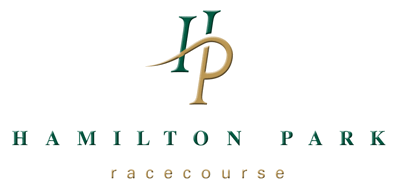 Racing in Hamilton Park has been dated back as far as 1782 and the course is now an institution within sports in Scotland. Hamilton is based just south of Glasgow, which means that it offers a good range of transport links to and from the racecourse. This has proved to be massively popular with racing fans and as a result they flock to the course, with it being as much a social event than simply a horse racing meeting.
Racing in Hamilton Park has been dated back as far as 1782 and the course is now an institution within sports in Scotland. Hamilton is based just south of Glasgow, which means that it offers a good range of transport links to and from the racecourse. This has proved to be massively popular with racing fans and as a result they flock to the course, with it being as much a social event than simply a horse racing meeting.
Hamilton Park has always been a forward-thinking type of racecourse and with it has been able to set quite a few “firsts” is their time. For example, they were the first racecourse to host an evening fixture in Britain back in 1947 and in 1971 they were the first to host a morning meeting as well, two things that are very much part and parcel within British horseracing.
The tack is set up exclusively for flat racing, so it’s more of a buzz within the summer months than over the winter. The track is also owned by that of the Hamilton Park Trust, who are non-profit, meaning that any money made by the course is ploughed straight back into the course and reinvested.
There are several meetings held at the track throughout the year, but the most notable race comes from the July meeting in the form of the Glasgow stakes. It’s a listed race but comes with a purse of £43,000 for 3-year-old horses. Probably the most notable winner in more recent times has been that of Postponed in 2014. Following that win the horse went on to win the Dubai City of Gold, Dubai Sheema Classic and Coronation Cup, to name just a few.
Haydock Park
Newton-le-Willows, Merseyside, WA12 0HQ | Website
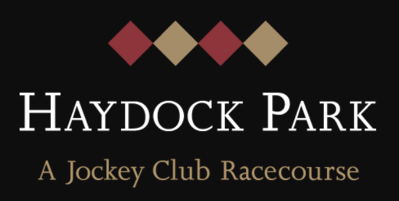 Racing at Haydock Park has taken place since the early 19th Century, but the current racecourse only opened their doors for the first time in 1899. It’s hosted in St Helen’s in England and is widely seen as one of the bigger race tracks in the country, running both flat and national hunt racing throughout the year.
Racing at Haydock Park has taken place since the early 19th Century, but the current racecourse only opened their doors for the first time in 1899. It’s hosted in St Helen’s in England and is widely seen as one of the bigger race tracks in the country, running both flat and national hunt racing throughout the year.
The actual track measures just over 1 mile and 5 furlongs. It’s fairly flat as horse racing tracks go, but does include tricky corners for the longer races with several tough hurdles for the National Hunt races that take place throughout the winter months. The home straight measures 5 furlongs as part of the track, but they are to extend this via the “cute” allowing it to reach just over 6 furlongs, meaning that several of the flat races are run in one continuous line.
Haydock Park has been widely recognised by its peers throughout the years, including being awarded Racecourse of the Year in 1998 and 2000. As aprt of the lure to the track, the course holds two group 1 races that take place in the September meeting towards the end of the flat racing season.
These races are the Haydock Sprint Cup and the Betfair Chase. The Sprint Cup is definitely considered one of the major races in the country, with a £260,000 purse to boot. The Betfair chase, whilst lower in terms of prize money with £200,000 up for grabs, has had some massively iconic horses win it, including Kauto Star who holds the records for the most wins with 4 in 2006, 2007, 2009 and 2011. Other notable winners have included Cue card, Silviniaco Conti and Imperial Commander, all modern-greats in the horse racing industry.
Hereford
Roman Rd, Hereford, HR4 9QU | Website
 Hereford racecourse has seen a bit of a tough time of late if truth be told. The course has been in use since 1771 when it first opened its doors and was formerly owned by that of the Arena Racing Company, who owned several racecourses throughout the UK.
Hereford racecourse has seen a bit of a tough time of late if truth be told. The course has been in use since 1771 when it first opened its doors and was formerly owned by that of the Arena Racing Company, who owned several racecourses throughout the UK.
But, in 2012 the company were unable to gain a license from Herefordshire Council which meant they were to cease operations and all National Hunt racing there was then stopped. Between 2012 and 2016 only a few point to point meeting a and racing for Arabian horses was allowed on site, with special permits from the council.
Fast forward a few years and in 2016 they were able to open their doors once again to National Hunt racing. Initially they were granted three meetings that ran from October to the end of the season. This number was then increased for the 2017 calendar year with 11 National Hunt fixtures included in total. Since then the racecourse has continued to grow and more meeting seemingly added each year.
The track at Hereford is quite unusual as it’s basically in a square shape. It measures around a mile and a half in total length and even though it was greatly improved in the 1960’s, still remains pretty similar today, which adds to the charm of the track as much as anything.
The racecourse is now an integral part of the local community and it’s closure was one that was met with huge upset within the county of Herefordshire. The re-opening of the track in 2016 proved just how important it was with over 5,000 people turning up for the meeting, a huge crowd in relative terms for what is a fairly small track in all honesty.
Hexham
High Yarridge, Hexham, NE46 2JP | Website
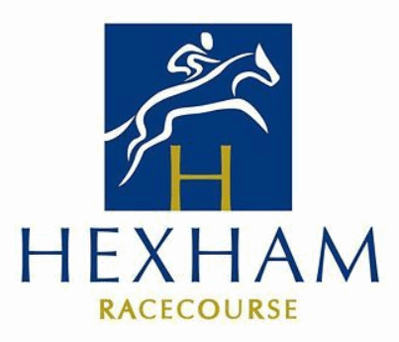 Hexham racecourse is located within the county of Northumberland and has been in existence since 1740, making it one of the oldest tracks still in existence. The place is probably as famous for its point to point meetings and farmers markets as it is National Hunt racing, but it offers fans of the sport a fantastic opportunity to view some quality racing throughout the year.
Hexham racecourse is located within the county of Northumberland and has been in existence since 1740, making it one of the oldest tracks still in existence. The place is probably as famous for its point to point meetings and farmers markets as it is National Hunt racing, but it offers fans of the sport a fantastic opportunity to view some quality racing throughout the year.
It’s a course that has a huge social scene and with it sees the locals flock to the course for pretty much every meeting. Due to its location to the town of Hexham and the fact it’s one of very few within the North East of England, it means that it has to rely on this local trade to keep its doors open, which is something that many fans recognise and as a result, make more of an effort to attend race days and meetings.
The course is spanned out over one and a half miles. Interestingly, the home straight is dead flat, with zero gradient at all. It’s often a course, due to its location in the North of England, that has soft to heavy ground throughout the year, so many trainers will target races at the course in order to improve stamina of horses in these conditions. But, due to the fact that weather can play a huge role at the track, it actually has no racing at all through February in order to give the ground a chance to come good for the final couple of months of the season.
Huntingdon
Thrapston Rd, Brampton, Huntingdon, PE28 4NL | Website
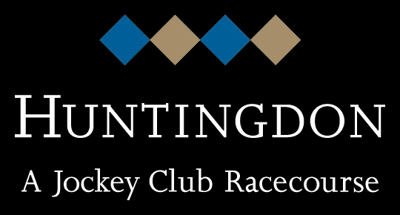 Huntingdon racecourse is a key spot for National Hunt racing within the UK. It’s able to host no fewer than 17 race meetings each year, which is an impressive amount, especially given that it’s all over jumps and throughout a relatively short season.
Huntingdon racecourse is a key spot for National Hunt racing within the UK. It’s able to host no fewer than 17 race meetings each year, which is an impressive amount, especially given that it’s all over jumps and throughout a relatively short season.
The course is based in Brampton, Cambridgeshire and it’s quite unique in that has a big lake in the middle of the track. The track itself measures a little over one and half miles and with it has 11 testing hurdles that horse need to navigate over with each lap of the track that is needed. Huntingdon is another course that has a huge role to play as part of the community. The Boxing Day meeting is probably the courses biggest event and with they see over 8,000 people flock and enjoy a solid days racing.
The Boxing Day meet also includes what is arguably the biggest race of the year as well, in the form of the Grade 2 Peterborough Stakes. With a £60,000 purse, the Grade 2 listed race has been running at the course since 1969 and is now part of the 2mile 4 ½ furlong slog around the course in what’s often tricky conditions. Edredon Bleu is the most successful horse at the race with 4 wins to it’s name from 1998 to 2001.
Another notable race is that of the Sidney Banks Memorial Novice’s Hurdle. This has been in place 1976 and is run over 2 mil and 3 ½ furlongs.
Kelso
Kelso, TD5 7SX | Website
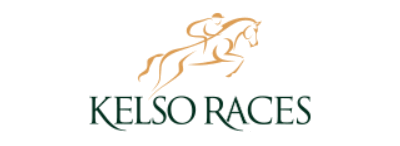 Kelso is probably one of the more iconic racetracks that is located in Scotland. Whilst the place might be much smaller than the likes of Ascot and Cheltenham, Kelso comes with its own charms and as a result, has won numerous awards, including that of the Best Small Course in Scotland and North of England three times in 2007, 2012 and 2014 by the Racegoers Club. Many people describe the course as going back in time somewhat, but it’s all about character at Kelso, which the racecourse has in abundance.
Kelso is probably one of the more iconic racetracks that is located in Scotland. Whilst the place might be much smaller than the likes of Ascot and Cheltenham, Kelso comes with its own charms and as a result, has won numerous awards, including that of the Best Small Course in Scotland and North of England three times in 2007, 2012 and 2014 by the Racegoers Club. Many people describe the course as going back in time somewhat, but it’s all about character at Kelso, which the racecourse has in abundance.
The track layout comes in the form of a 1mile 600 yard chase track and a 1mile 330 yard hurdle track. Whilst National Hunt racing is exclusively run at Kelso these days, it was initially set up as a flat season track until 1888 when it switched platforms. At the time it was also known as the Duke’s Course. The Grandstand has been about since 1822 and whilst it’s had numerous repairs to it and modernised within that time, it still has the same character that it used to and has changed very little, much to racegoers delight when visiting the track.
In terms of racing, there are two races that standout throughout each season in the form of the Morebattle Hurdle and the Premier Kelso Hurdle. The Morebattle Hurdle has been running since 1988 and with it has seen a big increase in popularity. The most successful horse to have raced in it is that of Jinxy Jack, winner 4 times in a row from 1990 through to 1993.
The Premier Kelso Hurdle is the highest ranked race at the track, upgrading from a Class B to Grade 2 status in 2003. It’s been running since 1990 and has seen winners such as Mount Mews, Bold Sir Brian and Tap Night all see success here. Winning jockeys and trainers have included the likes of Sam Twinston-Davies, Graham Lee, Lucinda Russell and Paul Nicholls, to name just a few.
Kempton Park
Staines Rd E, Shepperton, Sunbury-on-Thames, TW16 5AQ | Website
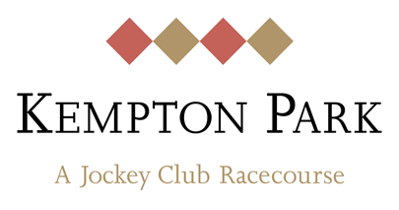 Opened in 1878, Kempton Park has been a firm favourite within British horse racing circuits for a long time now. Based just outside of London in the Surrey countryside, the racecourse has not only been able to carve its way into the best UK racecourses, but has to be up there with one of the best in the world, such is the calibre of racing it now attracts.
Opened in 1878, Kempton Park has been a firm favourite within British horse racing circuits for a long time now. Based just outside of London in the Surrey countryside, the racecourse has not only been able to carve its way into the best UK racecourses, but has to be up there with one of the best in the world, such is the calibre of racing it now attracts.
The course hosts both flat and National Hunt racing, which means that it’s open all year round. In 2006 the site closed briefly in order to bring in a new synthetic track which allowed flat races to run on, whilst preserving the turf for the National Hunt fixtures throughout the winter. The all-weather track is now known as the Jubilee Course and is a mile long, which does join on to the main track if needed.
The most iconic event has to be that of the Boxing Day meeting, which includes no fewer than three Group 1 races for what is widely regarded as one of the best National Hunt meetings of the year. The Group 1 races are made up of the King George VI Chase, Kauto Star Novices Chase and the Christmas Hurdle.
Whilst all three are high quality races, the King George VI Chase is probably the highest profile, coming in with a £225,000 purse, one of the biggest in UK. The 3 miles race has been won by some of the world’s greats, none more so than that of Kauto Star who won the race an incredible 5 times in 2006, 2007, 2008, 2009 and 2011. Other notable winners include Cue Card, Long Run, Best Mate, Desert Orchid, Wayward Lad and See More Business.
Leicester
Leicester Road, Oadby, Leicester LE2 4AL | Website
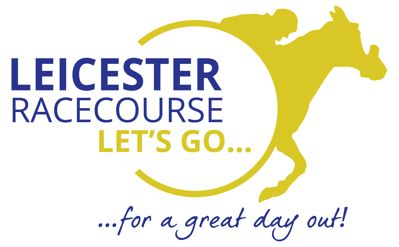 Racing in Leicester dates back to 1773 and although it’s moved from Victoria Park to its current location in 1883, holds a strong traction within the city and the surrounding areas. It’s one of a number of privately owned racecourses in the country, with Leicester Racecourse Company Limited being the name above the door.
Racing in Leicester dates back to 1773 and although it’s moved from Victoria Park to its current location in 1883, holds a strong traction within the city and the surrounding areas. It’s one of a number of privately owned racecourses in the country, with Leicester Racecourse Company Limited being the name above the door.
The course is able to host both National Hunt and flat racing throughout the year, which makes it one of the more accessible tracks that you will see. The track is often thought to be one of the tougher tracks to navigate for the horses, mainly down to the fact is that it was quite undulating and included 4 fences on the run in to the finish line for National Hunt racing. It includes a number of open ditches, with one being moved from the fourth last to the third last in order to add another layer of difficulty for the horses as they begin to tire coming in to home.
Interestingly, Leicester race course was actually at the front of one of the most famous scandals in recent times. A horse called Flockton Grey was entered into a race in 1982, but as the trainer had suffered no winners for several years and was falling on hard times, decided to run a ringer instead. The horse that was actually entered was that of Good Hand and in turn, was carrying around 47 pounds less than his younger opponents. The horse romped home by 20 lengths but an investigation into the win that followed soon outed the horse and of course, the trainer, costing him £45,000 in fines and costs, along with a 9-month suspension from the sport.
Lingfield Park
Racecourse Rd, Lingfield, RH7 6PQ | Website
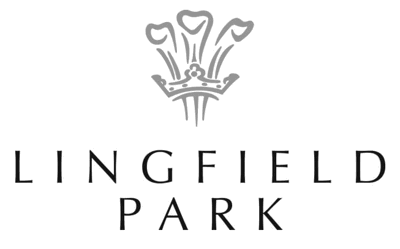 Lingfield Park Racecourse has been around since 1890 and was opened by the then Prince of Wales (later Edward VII). The course is actually pretty unique in that it’s one of just 5 tracks to offer an all-weather track alongside that of turf. The synthetic all-weather track means that it’s able to offer winter flat racing. The summer flat meetings are mainly ran on the turf and they also offer winter National Hunt racing on turf as well, making it one of the busiest racecourses in the UK.
Lingfield Park Racecourse has been around since 1890 and was opened by the then Prince of Wales (later Edward VII). The course is actually pretty unique in that it’s one of just 5 tracks to offer an all-weather track alongside that of turf. The synthetic all-weather track means that it’s able to offer winter flat racing. The summer flat meetings are mainly ran on the turf and they also offer winter National Hunt racing on turf as well, making it one of the busiest racecourses in the UK.
The course is situated in the Surrey countryside, just a few train stops from the centre of London and a popular spot for people travelling from within the city. As a result, they are able to get huge crowds for meetings held over several days, but also benefit from evening racing with visitors communing from the city after work or even on their way home.
The course has had serval owners over the years and each have tried to improve it in some way. Ladbrokes were one of the owners at one point until they sold up in 1982. Facilities such as flood defences were added along with the decision to include the all-weather track opening in 2001. A new grandstand was erected in 2004 at the cost of £5.5million and now includes both a Marriot hotel on site as well as an 18-hole golf course.
Lingfield is probably best known for its feeder races, where up and coming horses are tested to see how they will fair in larger races. The Winter Derby is probably the biggest of the races hosted at Lingfield and with it comes a purse of £100,000. It’s also worth noting that this Group 3 race is the first Group race of the year. The Lingfield Oaks Trial, whilst not the biggest in terms of purse (£40,000) is another massively important race as it works as a feeder into the Epsom Oaks, which is one of Britain’s 5 Classics and richest races.
Ludlow
Bromfield, Ludlow, SY8 2BT | Website
 Racing at Ludlow dates back as far as 1725 and it’s even reported that in the 14th century soldiers from Ludlow Castle used to use the grounds to march and train their horses, making it an iconic part of English horse racing history.
Racing at Ludlow dates back as far as 1725 and it’s even reported that in the 14th century soldiers from Ludlow Castle used to use the grounds to march and train their horses, making it an iconic part of English horse racing history.
The track possibly isn’t the biggest on the current circuit of racecourses within the country, but it’s one that definitely stands out. The main reason is that the B4365 road passes through the course at three different points. So, when race meetings are on, this road needs to be closed off, but when no meetings are taking place, it’s classes as a public highway. It’s the only race track in England where a main road passes through and has to be closed down for race days.
The location of Ludlow is within the county of Shropshire and the course is used exclusively for that of National Hunt racing throughout the winter months. There are 17 meetings in total running from October through to April.
In terms of racing, there are a few notable inclusions over the year, including the likes of the Prince of Wales Chase, The Attwood Handicap Chase, The Forbra Gold Cup, Charity Chase, Evening Meeting in May, Totepool/Ladies Day in May also and the Tanners Christmas Meeting, which is held in the week leading up to Christmas Day.
Even though the venue is quite small, there are two main stands and a pavilion for punters to enjoy hospitality when at the racetrack. The Jubilee Box is able to accommodate 6 boxes in total, with the others being more of an informal dining/drinking area.
Market Rasen
Legsby Road, Market Rasen, LN8 3EA | Website
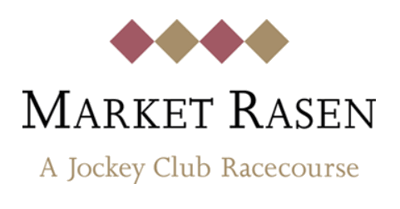 Market Rasen racecourse is, rather unsurprisingly, lactated in the town of Market Rasen in Lincolnshire. It’s one of the better looking racecourses if we are being honest and surrounded by a bustling town and wooded area makes for some iconic photographs and shots of races throughout the years.
Market Rasen racecourse is, rather unsurprisingly, lactated in the town of Market Rasen in Lincolnshire. It’s one of the better looking racecourses if we are being honest and surrounded by a bustling town and wooded area makes for some iconic photographs and shots of races throughout the years.
The length of the course is around one and a quarter mile, and with it offers a tough right-handed oval that jockeys and horses need to navigate their way around. It’s actually a fairly unique track in that it only hosts National Hunt racing, but instead of conforming to the usual season of September to April, Market Rasen actually hosts National Hunt Races all year round, which makes it one of very few to do so through the summer months. It’s for this reason why so many trainers like to utilise the course in order to keep horses sharp for when the season starts proper.
There are four main races that are held each year at the track which we would state are probably the highlights of the years. These include the Prelude Handicap Hurdle, Prelude Handicap Chase, Summer Handicap Hurdle and the Summer Plate.
The Summer Plate is the biggest out of the four and this takes place in late July running over 2m 5 furlongs around the course. Previous winning jockeys and trainers have included the likes of AP McCoy, Barry Geraghty, Graham Lee, Sam Twinston-Davies, Paul Nicholls, Jonjo O’Neil, David Pipe and Martin Pipe, to name just a few.
Musselburgh
Linkfield Rd, Musselburgh, EH21 7RE | Website
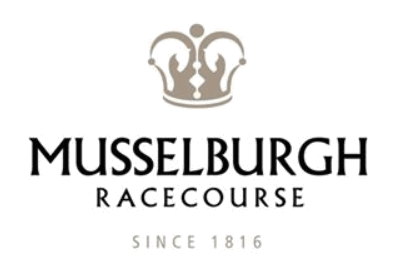 Musselburgh is one of the biggest racecourses in Scotland. In fact, it’s second only to that of Ayr. Racing has been taking place at the course since 1816 and due to its size, is able to host a 9 hole golf course within the centre of the track. The golf course actually dates back to as far as 1672 and there are even reports that horse racing was on site before the golf, although this cant be proved, hence the 1816 official open date.
Musselburgh is one of the biggest racecourses in Scotland. In fact, it’s second only to that of Ayr. Racing has been taking place at the course since 1816 and due to its size, is able to host a 9 hole golf course within the centre of the track. The golf course actually dates back to as far as 1672 and there are even reports that horse racing was on site before the golf, although this cant be proved, hence the 1816 official open date.
What’s great about Musselburgh is that it’s able to offer both National Hunt and Flat racing, which means there are meetings that take place all year round. Given that the course is based in East Lothian, there aren’t all that many other racecourses nearby, so it’s an important course to have not just for the UK racing circuit, but also for that of racing fans in Scotland and in particular the local area.
National hunt racing wasn’t added to Musselburgh until 1987 and whilst it offers a good range of both flat and National Hunt races now, it’s probably fair to say that flat racing is still the dominant discipline at the race track.
The track had been hit hard in the 1960’s when off course betting shops were able to open. In truth they were never really able to recover from this and whilst courses nearby were closing, they were able to stay open by the skin of their teeth. But, from 1995 a £7.5million refurbishment of the course was to take place, which saw a new hospitality stand and refurbishment to the existing stands take place. An all-weather strip was also added in 2012 in order to maintain the bends on the racetrack. The fact that they now get over 70,000 through the turnstiles each year, compared with just 38,000 in 1999 shows that these improvements have been a massive positive for the racecourse.
Notable races throughout the year include the likes of the Maggie Dickinson Stakes, William Hill Scottish Spring Cup, Royal Mile, Edinburgh Cup, Queen’s Cup and the Edinburgh National.
Newbury
Racecourse Rd, Newbury, RG14 7NZ | Website
 Newbury racecourse first opened their doors in 1905, which interestingly actually makes it one of the younger racecourses in the country, even though they now over 100 years old. The course is undoubtedly one of the more iconic tracks though and is able to host both flat and |National Hunt racing throughout the year. It’s claim to fame is that it’s able to host one of just 36 Group 1 flat races in the form of the Lockinge Stakes. An interesting fact is that during the First World War the racecourse was actually used a Prison of War camp for German Prisoners.
Newbury racecourse first opened their doors in 1905, which interestingly actually makes it one of the younger racecourses in the country, even though they now over 100 years old. The course is undoubtedly one of the more iconic tracks though and is able to host both flat and |National Hunt racing throughout the year. It’s claim to fame is that it’s able to host one of just 36 Group 1 flat races in the form of the Lockinge Stakes. An interesting fact is that during the First World War the racecourse was actually used a Prison of War camp for German Prisoners.
Newbury is a course that is often frequented by the Queen. In fact, she actually spent her 86th birthday there watching two of her horses run in the form of Sequence and Momentary, although both failed to win.
As mentioned the Lockinge Stakes is the highlight of the year when it comes to flat racing. The race comes with a massive £350,000 purse, making it one of the richest races in the country. Some of the more notable winners include the likes of Frankel, Fly to the Stars, Pall Mall, Welsh Pageant and Soviet Line. Leading trainer in the event is that of Sir Michael Stoute, with leading jockey Lester Piggott and leading owner, Godolphin.
Other notable races at the track include the Game Spirit Chase, Denman Chase, Hungerford Stakes, Mill Reef Stakes, John Francome Novices’ Chase and the Berkshire Novices’ Chase, to name just a few.
Newcastle
High Gosforth Park, Newcastle upon Tyne, NE3 5HP | Website
 As the biggest racecourse in the North East of England, Newcastle has a hue role to play in not only the participation of the sport but also in the showcasing of it. The racecourse has been open since 1882 and in that time has seen its fortunes fluctuate somewhat. The ability to now offer both National hunt and flat racing has definitely been a driving factor to the success of the racetrack and one of the main reasons why it’s now so well attended.
As the biggest racecourse in the North East of England, Newcastle has a hue role to play in not only the participation of the sport but also in the showcasing of it. The racecourse has been open since 1882 and in that time has seen its fortunes fluctuate somewhat. The ability to now offer both National hunt and flat racing has definitely been a driving factor to the success of the racetrack and one of the main reasons why it’s now so well attended.
Upgrades to the facilities and the course have seen it flourish in recent years. One of the more notable changes has been the inclusion of the all-weather track that was installed ion 2016. Due to the weather in the North East being highly unpredictable, the all-weather track means that meeting no longer need to be cancelled based on the condition of the turf, something that is vital for a racecourse such as Newcastle.
It’s also been the benefactor of some shrewd business moves behind the scenes. In 2022 they were able to appoint a Scottish Businessman by the name of David Williams to act as Managing Director. Williams was able to boost turnover from £2.5m to £65.m in just 6 years. Newcastle’s biggest meeting, The Northumberland Plate Weekend, now sees over £30million pumped into the local economy alone and attracts over 15,000 racegoers as a result.
Newcastle is actually able to offer a really strong range of races throughout the year. The Northumberland Plate is the highlight of the flat racing season and comes with a purse of £150,000. The National Hunt season is highlighted by that of the Fighting Fifth Hurdle, with a purse of £110,000, having been won by the likes of Comedy Of Errors, Birds Nest, Beveur d’Air, Overturn and Straw Bear over the years.
Newmarket
Newmarket, CB8 0TG | Website
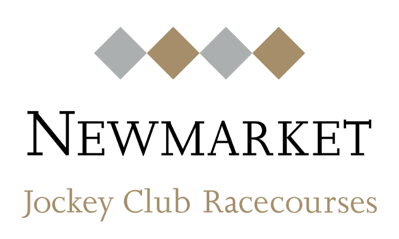 Newmarket is probably the most important racetrack in the UK. It’s the unofficial headquarters of British horseracing and has been about since 1667. What’s important to note about Newmarket is that whilst it’s able to offer some huge races at the track throughout the year, it’s also got the largest number of training yards based in and around the course than anywhere else in the country, making it an almost “Mecca” type for racegoers.
Newmarket is probably the most important racetrack in the UK. It’s the unofficial headquarters of British horseracing and has been about since 1667. What’s important to note about Newmarket is that whilst it’s able to offer some huge races at the track throughout the year, it’s also got the largest number of training yards based in and around the course than anywhere else in the country, making it an almost “Mecca” type for racegoers.
There are an astonishing 9 of 36 Group 1 flat races held at the course every year, but the two biggest have to be that of the 1,000 and 2,000 Guineas. Both of the races come with a purse of £500,000 each and has seen some of the most iconic horses to have lived win these races. Once more, the races have been about since the early 19th Century, which again highlights their importance. Winners between the two races have included Rock of Gibraltar, Sea The Starts, King of Kings, Kazzia, Minding and Cape Verdi, to name just a few.
Other notable Group 1 races held at Newmarket include the Falmouth Stakes, July Cup, Fillies’ Mile, Sun Chariot Stakes, Cheveley Park Stakes, Dewhurst Stakes and the Middle Park Stakes.
The location of the track means that there in fact two courses on site; The Rowley Mile Course and The July Course. The former is 1m and 2 furlongs in length which undulates quite a lot and is mainly used in the spring and autumn, also playing host to the majority of the Group 1 races. The latter is 1 mile in length but can use the Beacon course if needed for extended races and runs throughout the summer months. It’s also worth noting that there is one more course in the form of the Round Course, but this is only used once a year for the Newmarket Town Plate.
Newton Abbot
Newton Rd, Kingsteignton, Newton Abbot, TQ12 3AF | Website
 Newton Abbot is visually a stunning little racecourse that is surrounded by the Devonshire countryside. It’s been open since 1866 and is still one of the more popular tracks in the south-west, mainly down to its friendly atmosphere and almost cult-like following with the local community.
Newton Abbot is visually a stunning little racecourse that is surrounded by the Devonshire countryside. It’s been open since 1866 and is still one of the more popular tracks in the south-west, mainly down to its friendly atmosphere and almost cult-like following with the local community.
The track is set up to host only that of National Hunt racing and measure just over 1 mile and 1 furlong in total length. It’s actually a fairly easy course to navigate and the fences are pretty low in height making it a favourite for younger or older horses, due to it being less challenging. It’s famous for having a very short run in from the last fence to the finish line, which can cause for some highly dramatic finishes, another popular attraction for visitors.
The main grandstand on site was actually opened by that of the Queen Mother in 1969 and whilst the corporate facilities were open some time alter in 1990, it still has a fairly rustic charm to it all. Investment has been hard to come by for the course and whilst still more than adequate, is starting to get a little tired.
Even though Newton abbot only host National hunt racing, they are able to offer up racing throughout the summer months as well. The course has been boosted by being able to offer evening race meetings, along with the addition of ladies days within some of their 2-day meetings.
Nottingham
Colwick Park, Nottingham, NG2 4BE | Website
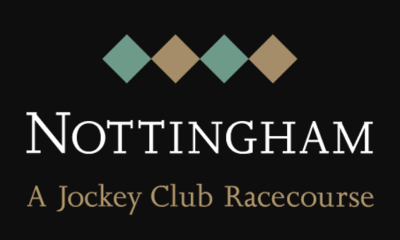 Racing in Nottingham actually dates back to 1773 when it used to be hosted by the Nottingham Forest Recreational Ground. But, it moved to its current home in Colwick Park in 1892 and the rest, as they say, is history. The track is actually very unique in that there are two that run directly inside one and other. The shorter track is that of the spring/autumn track and measures just a few hundred yards shorter than that of the longer track, which is used throughout the summer months. I
Racing in Nottingham actually dates back to 1773 when it used to be hosted by the Nottingham Forest Recreational Ground. But, it moved to its current home in Colwick Park in 1892 and the rest, as they say, is history. The track is actually very unique in that there are two that run directly inside one and other. The shorter track is that of the spring/autumn track and measures just a few hundred yards shorter than that of the longer track, which is used throughout the summer months. I
It’s worth noting that only flat racing takes place at the track, although this wasn’t always the case as it used to host both National hunt and flat racing up until 1996.
There are three races that take place each year which you could argue are the standout races of the year. The first is that of the Barry hills Further Flight Stakes and this comes with a £40,000 purse. It’s run in the April meeting and is named after the racehorse Further Flight, who won it twice in 1996 and 1998. The second is that of the Kilvington Fillies’ Stakes, which has been running since 2000. This takes place over the 6-furlong tack at Nottingham and takes place in May.
The final, and arguably biggest of the three is that of the Nottinghamshire Oaks. Another Listed race with a £40,000 purse, this is the newest of the three races, starting in 2006, but has already seen some quality horse win and has carried one the tradition from the Warwickshire Oaks, which got moved to Nottingham.
Perth
Scone Palace Park, Perth, PH2 6BB | Website
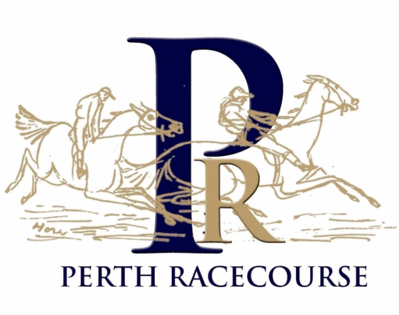 As one of the few racecourses in Scotland, Perth has a strong role to play in the heritage of Scottish Racing. The racecourse first opened their doors in 1908 and with it has played an integral role within the racing sector. The racecourse lies adjacent to the ancient Scone Palace, a category A Listed historic house.
As one of the few racecourses in Scotland, Perth has a strong role to play in the heritage of Scottish Racing. The racecourse first opened their doors in 1908 and with it has played an integral role within the racing sector. The racecourse lies adjacent to the ancient Scone Palace, a category A Listed historic house.
The track is the most northernmost racecourse in Britain and whilst it’s a fairly remote area, is actually well supported by the locals. The racing on offer isn’t all that great to be honest, but the ten-furlong track is one that has proved to be mightily tricky over the years with many seeing it as a good test for younger horses as there are trying to apply their trade within the racing sector.
The width of the course means that there are actually two layouts that come in the form of the Steeplechase course and the Hurdle course. The latter runs along the inside track and switches back to the outside as they move their way across and past the main grandstand.
Whilst the course only caters for National Hunt racing, it is worth noting that they run racing throughout the year, including the summer months, even though this is technically out of season for the most part of National Hunt venues.
Plumpton
Plumpton, Lewes, BN7 3AL | Website
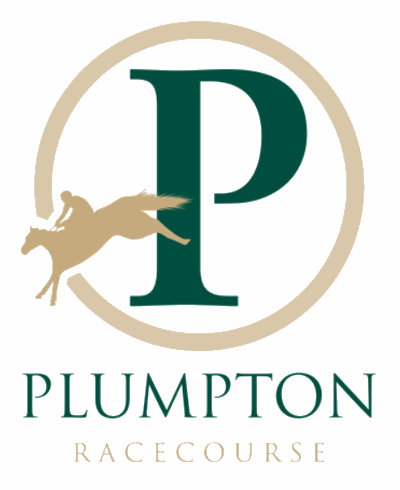 Plumpton is one of the smallest courses in the country. It’s located just outside of East Sussex and with it offers a certain charm that only racecourses of this size can. It’s got limited amenities in the way of hospitality, but it still offers a full range of fixtures throughout the year.
Plumpton is one of the smallest courses in the country. It’s located just outside of East Sussex and with it offers a certain charm that only racecourses of this size can. It’s got limited amenities in the way of hospitality, but it still offers a full range of fixtures throughout the year.
One of the things that the course does have going for is that it sits advancement to that of Plumpton railway station. They are able to provide hourly trains straight from London Victoria which means that it’s a perfect location for a day trip out of London. The course relies heavily on commuters from the city and with it sees some great crowds, especially for Ladies days and the like.
The course itself is actually the one of smallest National Hunt tracks in the country. It measures just over 1 mile, but it’s fairly tight and quite hilly, which means that racing can be super competitive. It’s been voted as one of the best in terms of viewing for fans as head up the hill on the way out and down as they come back towards the grandstand.
Plumpton has made some fairly recent history as well. It was the course where Champion Jockey AP McCoy rode his 3000th winner Restless, trained by that of Nicky Henderson no less in February of 2009.
Pontefract
Park Rd, Pontefract, WF8 4QD | Website
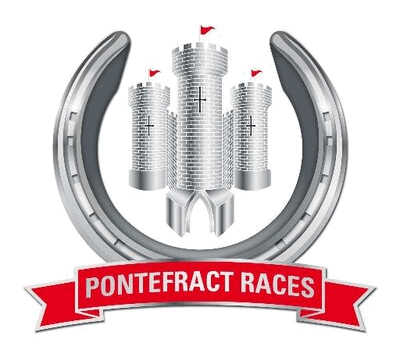 Pontefract racecourse is located in West Yorkshire and is one of the most honest tracks in the country. It was built within a pit community and everything that epitomises that generation is true with this racecourse. In fact, back in the day racing used to start much later than most courses at 2:45pm, this allowed people who worked down the mines time to finish work and get to the racetrack for a full day’s card. Sadly, this was changed when the puts were closed in 2002.
Pontefract racecourse is located in West Yorkshire and is one of the most honest tracks in the country. It was built within a pit community and everything that epitomises that generation is true with this racecourse. In fact, back in the day racing used to start much later than most courses at 2:45pm, this allowed people who worked down the mines time to finish work and get to the racetrack for a full day’s card. Sadly, this was changed when the puts were closed in 2002.
The racecourse is set up for flat racing and it runs exclusively with this discipline. The track is one that measures a full two miles in a continuous circle, which is unique as it’s one of very few in the country to be of this size. With it, the course has been able to host one of the longest flat races in the country, measuring 2m 5f.
The summer months dominate the racing at Pontefract and with it are able to host some of the biggest races of the year. These include the likes of the Pontefract Castle Stakes, Pontefract Stake, Pipalong Stakes, Flying Fillies’ Stakes and the Silver Tankard Stakes. The most notable races are probably the last two of the Flying Fillies’ Stake sand the Silver Tankard stakes, with purses of £55,000 and £35,000 respectively.
Redcar
Thrush Rd, Redcar, TS10 2AS | Website
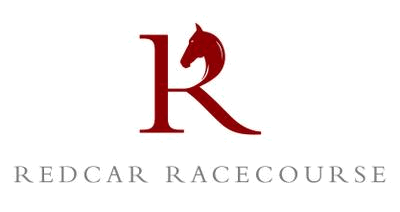 Based in North Yorkshire, Redcar is one of the norths most iconic racecourses. It’s a town that has been synonymous with the sport since it opened its doors in 1875 and is now an integral part not just for horse racing, but for the infrastructure of Redcar and the people that work there as well.
Based in North Yorkshire, Redcar is one of the norths most iconic racecourses. It’s a town that has been synonymous with the sport since it opened its doors in 1875 and is now an integral part not just for horse racing, but for the infrastructure of Redcar and the people that work there as well.
Redcar is a flat racing track and is just that, perfectly flat all the way around, which is something that is very unique in this day and age of racing. The facilitates are actually pretty poor and the main stands sit on the inside of the track, which is where you get the best vantage point of the course as well. Whilst it’s old, this is one of the many reasons why people keep coming back to the track and it works brilliantly well with corporate sponsors and charity days, especially with the close proximity of the seaside town on their doorstep.
The track itself measures around 1m and 4 furlongs in total length. The corner has a tight bend which makes the draw important for these races. But, it also has a 3-furlong chute that is able to create a 1-mile dead straight, dead flat run in for certain races. It’s actually because of this why a lot of trainers like to use Redcar as it gets a true reflection of how their horses are faring, without any track or condition bias.
There are 3 notable races that take place on track, which includes the Zetland Gold Cup, Two-Year-Old Trophy and the Guisborough Stakes. The Zetland Gold Cup is the oldest of the three and this has been running since 1988. It’s been won by some huge jockeys over the years, including Kieran Fallon, Paul Hanahan, Ryan Moore, Martin Dwyer and Kevin Darley, to name just a few.
Ripon
Boroughbridge Rd, Ripon, HG4 1UG | Website
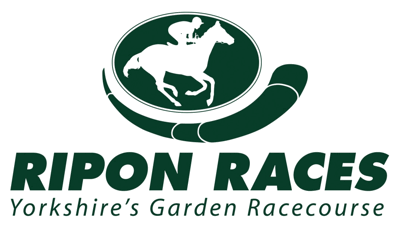 The market town of Ripon plays host to another iconic racetrack based within North Yorkshire. Ripon racecourse as we know it today has been in existence sine 1900 but racing within the town has been dated back as far as 1664 when it hosted its first ever meeting on Bondgate Green.
The market town of Ripon plays host to another iconic racetrack based within North Yorkshire. Ripon racecourse as we know it today has been in existence sine 1900 but racing within the town has been dated back as far as 1664 when it hosted its first ever meeting on Bondgate Green.
Racing within Ripon is actually of great importance to racing history in that it was the first place to host a female only horse race back in 1723. It’s seen hue success since then and whilst still regarded as small, is one of the major attractions within the county. In fact, in 2003 it was voted the Best Small Racecourse in the North by Racegoers’ Club, an award that is highly lucrative and one well deserved.
Ripon racecourse includes only flat racing these days and with it includes several meetings such as the “Big Night Out”, family days and ladies’ days. The highlight of the racing calendar at the course is that of Go Racing in Yorkshire, which is held in July and attended by thousands of punters across the meeting.
In terms of racing, the track on offer measures 1 mile 5 furlongs, so it’s one of the longer tracks, especially considering it’s quite a small location. The cramped bends and undulations throughout the course make it a tough ride for the horses, but a chute added to the home straight means this has been designed to make a 6 furlong run it on straight ground. The highlights of the course include the Ripon Champion Two Year Old’s Trophy and the Great St. Wilfrid Stakes, both run in August.
Salisbury
Salisbury, SP2 8PN | Website
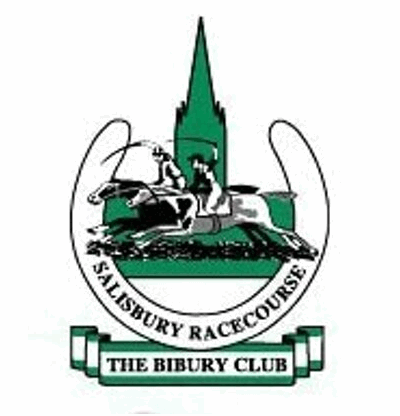 Salisbury is very much seen as the breeding ground of British horseracing. It’s been awarded the tag almost by accident, but for whatever reason is a hot bed for 2-year-old horses to come and ply their trade. The track is one that is often quite fast, but also fair, which means that it gives trainers a really good insight to see just how far along their young horses are.
Salisbury is very much seen as the breeding ground of British horseracing. It’s been awarded the tag almost by accident, but for whatever reason is a hot bed for 2-year-old horses to come and ply their trade. The track is one that is often quite fast, but also fair, which means that it gives trainers a really good insight to see just how far along their young horses are.
The course is set in the rolling countryside of Wiltshire and visually is one of the better-looking tracks in the country. It only hosts that of flat racing and is open from May to October, which makes it a fairly small window of opportunity to see racing there.
Salisbury racetrack carries a fair amount of history with it and has seen some of the best horses to have raced ply their trade their. These include the likes of Gimcrack, Eclipse, Sun Chariot, Mills Reef, Sir Percy who was winner of the 2006 Derby and Look Here, winner of the 2008 Oaks, to name just a few. It was also the first place that a horse owned by Winston Churchill would win a race in 1949 and also the place where Lester Piggott won his first professional race, aged just 12.
There are 16 meetings held throughout the year, with a mix of handicaps and maidens on offer. The standout races include the likes of the Cathedral stakes, Upavon Fillies’ Stakes, Sovereign Stakes and the Dick Poole Fillies’ Stakes, to name just a few.
Sandown Park
Portsmouth Rd, Esher, KT10 9AJ | Website
 Sandown Park is one of those racecourses that has embedded itself into British horseracing folk law. The track holds huge significance, not just in the top-flight racing that is on offer, but also the tracks ability to keep improving and almost setting a standard for racetracks that are considered to be the “elite”. Whilst they quietly go about their business surround by the likes of Newmarket, Ascot and the like, Sandown Park has consistently been able to offer quality racing since they opened their doors back in 1875.
Sandown Park is one of those racecourses that has embedded itself into British horseracing folk law. The track holds huge significance, not just in the top-flight racing that is on offer, but also the tracks ability to keep improving and almost setting a standard for racetracks that are considered to be the “elite”. Whilst they quietly go about their business surround by the likes of Newmarket, Ascot and the like, Sandown Park has consistently been able to offer quality racing since they opened their doors back in 1875.
Sandown Park has always been a course that has set it’s own standards and this was highlighted when they became the first track to charge for people to attend and also include a member’s area, two things that are a given in modern horse racing. The money was invested back into the facilities and the racing, which many believe is why they are now able to offer up 5 Grade1 National Hunt races and one Group 1 on the flat racing course.
The Group 1 race on flat is that of the Eclipse Stakes, which is run as part of their July meeting. The race commands a massive purse of £750,000, making it one of the richest in the country. It’s had an illustrious list of winner such as Sea The Stars, Golden Horn, Ulysses, Giant’s Causeway and Halling, to name just a few.
The Grade 1 National Hunt races include that of the Henry VII Novices’ Chase, Tingle Creek Chase, Celebration Chase, Scilly Isles Novices’ Chase and the Tolworth Hurdle. Of the bunch ,the standout has to be that of the Tingle Creek chase, which has a purse of £150,000. It’s another race that has seen some of the greats win it, including Kauto Star, Moscow Flyer, Sprinter Sacre, Un de Sceaux, Flagship Uberalles and of course, Desert Orchid.
Sedgefield
Racecourse Rd, Sedgefield, Stockton-on-Tees, TS21 2HW | Website
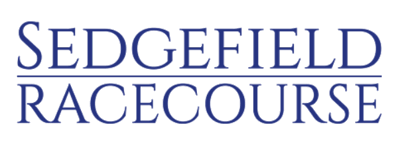 Sedgefield is the only racecourse that is situated in the north eastern county of Durham. The track is owned by the Arena Racing Company and has seen racing take part there since 1732, although admittedly little is known of the early meetings, with most referencing a start date on the current site of 1804.
Sedgefield is the only racecourse that is situated in the north eastern county of Durham. The track is owned by the Arena Racing Company and has seen racing take part there since 1732, although admittedly little is known of the early meetings, with most referencing a start date on the current site of 1804.
The course wasn’t one of those that initially took off and it took a long time after the war to get it up to the standard that it is today. It was famously described by Clement Freud as “all field and not much sedge” in reference to the fact that facilities were pretty poor, to say the least. The racecourse actually faced closure several times over the next few decades until a £600,000 investment from Northern Racing allowed them to improve facilities and in turn, attract more punters to the course. \
As the course is set up for National Hunt racing and only National hunt racing, it runs throughout the winter months, which means, given that it’s based in the North East of England, sees some challenging conditions for horses on show.
The Durham national is probably one of the biggest events at the track and this takes part in October over 3 and ¾ mile, which is fairly unusual for these types of races and almost the “Gran National” of Durham, if you will. A horse called Fatehalkhair is one of the favourites as the racetrack who went on to win 20 races in its career, with all of them coming at Sedgefield.
Southwell
Southwell, NG25 0SG | Website
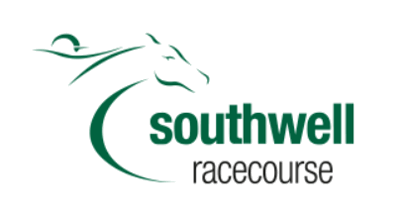 Southwell is one of the most versatile racecourses in the country. Not only do they offer both flat and National Hunt racing, but they do so on both turf and all-weather surface as well. In fact, the all-weather surface makes them one of just 6 tracks in the UK and the only tack to be running a fibresand surface, whereas most others are using synthetic.
Southwell is one of the most versatile racecourses in the country. Not only do they offer both flat and National Hunt racing, but they do so on both turf and all-weather surface as well. In fact, the all-weather surface makes them one of just 6 tracks in the UK and the only tack to be running a fibresand surface, whereas most others are using synthetic.
The course is located within Southwell, which is in the county of Nottinghamshire. Whilst Southwell is able to offer a good range of races throughout the year, the fibresand surface makes it a haven for the world’s best jockeys to come and train, especially in the winter months. Fibresand is often much heavier than turf or even other all-weather surface, so offers a really stern test for both horses and jockeys alike.
The site has been the scene of many refurbishments over the years and it has suffered from bad flooding, which caused it to close in 2012 for 2 months. This forced the hand of the all-weather surface to be installed, which allows for much flexibility in tehri racing.
The tracks biggest race has almost come as a default when they hosted the Great Yorkshire Chase (now Sky bet Chase) whilst building work at Doncaster Racecourse was taking place in 2007. Jockey Hayley turner is also associated with the Southwell course, growing up and working there, before carving out a successful racing career of her own.
Stratford On Avon
Stratford-upon-Avon, CV37 9SE | Website
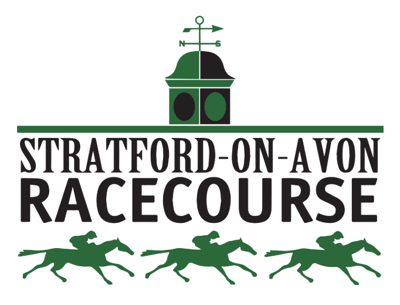 Stratford on Avon is probably better known simply as Stratford Racecourse and is based out of Warwickshire. The course is one of the smaller ones in the UK and with it only host a handful of meetings each year. Whilst a National Hunt based course, it’s only open between March through to November, with a break over the winter months to allow the turfed course to recover.
Stratford on Avon is probably better known simply as Stratford Racecourse and is based out of Warwickshire. The course is one of the smaller ones in the UK and with it only host a handful of meetings each year. Whilst a National Hunt based course, it’s only open between March through to November, with a break over the winter months to allow the turfed course to recover.
The racecourse has been open since 1755 and with it they have been able to ensure racing on the site for a long period of time, making it one of the oldest racecourses in the area. In terms of meetings, they are more targeted towards the locals of Stratford, although of include Ladies Day’s and family days throughout the year.
The course does come with three enclosures that are the Club Enclosure, Tattersall Enclosure and the Centre Course, allowing a wide variety of hospitality experiences for each meeting.
Taunton
Taunton, TA3 7BL | Website
 Taunton is quite an iconic racecourse in that it’s the last racecourse purpose built for National Hunt racing to be opened in the UK back in 1927, which is an incredible feat considering that’s almost 100 years ago. In fact, the course was the youngest full stop until Great Leighs was opened in 2008, although that is for flat racing.
Taunton is quite an iconic racecourse in that it’s the last racecourse purpose built for National Hunt racing to be opened in the UK back in 1927, which is an incredible feat considering that’s almost 100 years ago. In fact, the course was the youngest full stop until Great Leighs was opened in 2008, although that is for flat racing.
The course is based out of Taunton, which is in the county of Somerset. The grounds of the track are some of the most visually stunning that you can find, with the Backdown Hills offering a stunning backdrop to this charming racecourse. Even though it’s a fairly small site, visitors still flock from all over the south of England to enjoy a day’s racing at Taunton.
In the early years, the grounds and the facilities were liable to flooding, which meant that it took a while to really catch on in the area. Subsequently, massive improvements have come from the wooden huts that were originally on offer and now are able to offer the Orchard Stand along with the AP McCoy Stand, which is available to host functions outside of race meetings as well.
The oval track measures 1 mile and 2 furlongs in total length. Both bends are extremely tight and it’s a track that can be really tough on horses that get out of position early in the race.
Thirsk
Station Rd, Thirsk, YO7 1QL | Website
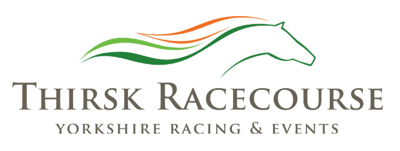 Thirsk racecourse is based in Yorkshire and actually runs fairly near to that of Ripon. In fact, the two courses aren’t far off the same stretch of road so often you will see trainers and jockeys dashing from one course to the other on the same day for different races.
Thirsk racecourse is based in Yorkshire and actually runs fairly near to that of Ripon. In fact, the two courses aren’t far off the same stretch of road so often you will see trainers and jockeys dashing from one course to the other on the same day for different races.
The course has been open since 1923, but racing has been on the site for around a hundred years prior to that, giving it great heritage. It’s another course that relies heavily on the local community and when meeting is on they tend to flock. In fact, it gets so popular that many folk thinks too many people are allowed in which makes it crowded, but the racecourse argue that it needs to make money whilst it can, given its size, which is fair enough.
Even though the course doesn’t really have any stand out races, especially since the Thirsk Hunt Cup ceased to exist, it’s main claim to fame is that the course has actually played host to the St. Leger no less, which is one of the UK’s premier flat races. It was used in 1940 as a war time substitute to keep the race running as it moved from Doncaster racecourse that was used as an airfield.
Towcester
London Rd, Towcester NN12 6LB | Website
Currently Closed: Towcester Racecourse went into administration in August 2018 and has been closed since. All races have been cancelled.
 Towcester Racecourse can be found in Northamptonshire and has been open since 1928. The course plays host to several National Hunt meeting over the course of each winter and with it are able to offer a fantastic days racing as a result. There’s no doubt that the track is one of the smaller ones in the country, but it’s popularity cannot be argued with.
Towcester Racecourse can be found in Northamptonshire and has been open since 1928. The course plays host to several National Hunt meeting over the course of each winter and with it are able to offer a fantastic days racing as a result. There’s no doubt that the track is one of the smaller ones in the country, but it’s popularity cannot be argued with.
The course has become kind of synonymous with having sharp bends and fast straights. The final gallop is all uphill as well which means that it really sorts the men from the boys, often with weaker horses being pulled up as a result of not anticipating the energy needed to get round what in fairness looks pretty innocuous.
One of the ways in which Towcester really became one of the crowd favourites was the fact that between 2002 and 2006 attendance into the racecourse was free. Obviously, this sort of offer meant that attendances shot up and they were still able to make money back from things such as food, drink and sponsorship. In 2006, the pricing structure changed a little, charging for the courses two biggest meets in that of the Boxing Day meeting and the Easter Sunday meeting, whilst keeping the rest of the years racing still free.
The course is also now well known for being the track in which Tony McCoy rode his 4,000th winner, riding Mountain Tunes in the Wetherby Novices’ Hurdle.
Uttoxeter
Wood Ln, Uttoxeter, ST14 8BD | Website
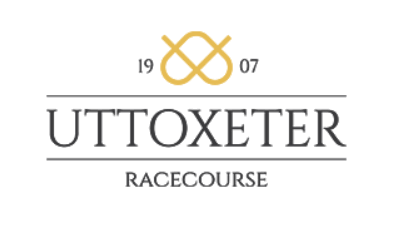 Uttoxeter is one of the more important and unique National Hunt tracks in the country. The doors have been open since 1907 and based out of the county of Staffordshire, has seen many of the greats race at the track at some point in time.
Uttoxeter is one of the more important and unique National Hunt tracks in the country. The doors have been open since 1907 and based out of the county of Staffordshire, has seen many of the greats race at the track at some point in time.
The course didn’t get any much need investment until 1966 where a cheque of £167,000 was written in order to improve facilities throughout the course. This allowed Uttoxeter racecourse to not only allow for more high-profile race meetings, but also events and functions outside of horse racing in the off season.
Further investment didn’t come again to the course until Sir Stanley Clarke was able to gain full control and almost started from scratch, ploughing significant sums of money into improving the racetrack. Following this, Uttoxeter continued to flourish and the course was known for producing Lord Gyllene, who was one of the most successful National hunt horses ever, winning the Grand National in 1997 by over 25 lengths.
In terms of racing at the track, there are two meetings in March and in June/July that offer some of the highest profile racing. The highlights for this is that of the Midlands Grand National, which is run almost a month to the day before that of the Grand National at Aintree. The most iconic winner of the modern day is that of Synchronised in 2010. The horse went on to win 4 majors in total, with his biggest being that of the Cheltenham Gold Cup in 2012.
Warwick
Hampton St, Warwick, CV34 6HN | Website
 Warwick racecourse is probably one of the best examples of a community driven course that you will find in the country. Whilst it’s one of the best small National hunt racetracks going, the fact that it includes a 9-hole golf course in the middle of the track along with driving range and plentiful dog walking paths running throughout, means that whether there is racing on or not, it’s a hive of activity.
Warwick racecourse is probably one of the best examples of a community driven course that you will find in the country. Whilst it’s one of the best small National hunt racetracks going, the fact that it includes a 9-hole golf course in the middle of the track along with driving range and plentiful dog walking paths running throughout, means that whether there is racing on or not, it’s a hive of activity.
Warwick is set in the county of Warwickshire and whilst they are exclusively National Hunt focussed these days, was actually able to offer flat racing at the track as well up until 2014. But, there had been a number of incidents with the track over the years and a fall by a horse called Artful Lady, who was later euthanised, forced the decision to move away from flat racing and concentrate on national hunt.
The course has a very healthy run of fixtures throughout the year still, with no fewer than 25 meetings in total, making it one of the busiest small National Hunt tracks in the country, with almost all meetings shown live on TV.
Warwick holds two Group 2 races in the form of the Leamington Novices’ Hurdle and the Kingmaker Novices’ Chase, without doubt the two highlights of the season. Both races are run at just over 2 miles and have seen some great be successful at them, including Long Run, Flagship Uberalles and No Refuge.
Wetherby
Wetherby, LS22 5EJ | Website
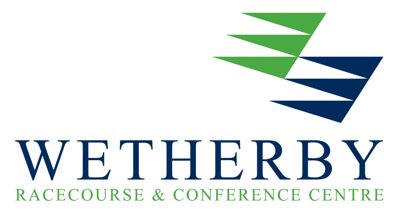 Wetherby racecourse is located in West Yorkshire and just 12 miles from Leeds City centre. The course actually has its own train station, which makes commuting from the City and connecting areas very easily. Racing has been taking place on the site since 1891, but it’s been Wetherby for much longer than that, situated on the Scaur Bank originally before being moved to its current home.
Wetherby racecourse is located in West Yorkshire and just 12 miles from Leeds City centre. The course actually has its own train station, which makes commuting from the City and connecting areas very easily. Racing has been taking place on the site since 1891, but it’s been Wetherby for much longer than that, situated on the Scaur Bank originally before being moved to its current home.
The track is quite unique in that it offers both National Hunt racing through the winter and flat racing through the summer. But, flat racing wasn’t adopted at the course until 2014 and whilst National Hunt had been successful, owners of the course had been keen to expand as Wetherby was the only track in the area that weren’t able to offer flat racing and National Hunt.
The move has been successful, which now sees racing all year round. Initially they were granted 4 flat meetings through the summer of 2014, but this number has increased to over 10, albeit with a slightly more limited take on the quality of races throughout these summer months.
The heights of the season, for the time being at least, comes from the National Hunt fixture list. The biggest race is that of the Grade 2 Charlie Hall Chase, that takes place on the Saturday of their November meeting. The race is run over 3 mile and 1 furlong and comes with a purse of £100,000. There have been some massive names to have won this race over the years, including Cue Card, Silviniaco Conti, See More Business and Wayward Lad, to name just a few.
Other notable races throughout the year include the Towton Novices’ chase, Wetherby Mares’ Hurdle, West Yorkshire Hurdle, Rowland Meyrick Handicap Chase and the Castleford Chase.
Wincanton
Wincanton, BA9 8BJ | Website
 Based on the South Coast in the county of Somerset, Wincanton is another of the popular, smaller race courses based in the UK. The stunning grounds in which Wincanton sits on makes it popular for both visitors and trainers alike. In fact, Paul Nicholls, one of the best trainers in the country has his yard not too far from Wincanton and he often tries out younger horses at the track to see how they fair.
Based on the South Coast in the county of Somerset, Wincanton is another of the popular, smaller race courses based in the UK. The stunning grounds in which Wincanton sits on makes it popular for both visitors and trainers alike. In fact, Paul Nicholls, one of the best trainers in the country has his yard not too far from Wincanton and he often tries out younger horses at the track to see how they fair.
The racecourse itself is widely regarded as one of the tougher in the country. The ground is often quite unforgiving and undulating, but it’s the hurdles that what makes Wincanton a real test. They are extremely high and offer a good test for any horses who may be tipped for the Grand National and such like races. In fact, the toughness of Wincanton is highlighted in the fact that it has the second highest fatality record in the country.
The oldest race held at the course is that of the Badger Ales, which takes on the 3m 1furlong route around the track. It’s a Listed status race and whilst not one that too many major names have won previously, is an important fixture, especially for the locals given its heritage. The Rising Star Novices’ Chase is where a lot of attention is had at Wincanton and it’s here where the country can see some of the best four-year-old’s ply their trade. Previous winners have included the likes of See More Business, Comply or Die and Silviniaco Conti, to name just a few.
Windsor
Maidenhead Rd, Windsor, SL4 5JJ | Website
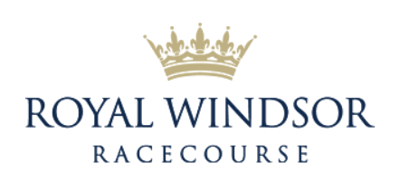 Windsor racecourse is based in Berkshire, just off from the River Thames and not far from London. The course dates back as far as Henry VIII, but it was thought that officially, racing didn’t start at the track until 1866.
Windsor racecourse is based in Berkshire, just off from the River Thames and not far from London. The course dates back as far as Henry VIII, but it was thought that officially, racing didn’t start at the track until 1866.
The course is quite unique in that it’s one of just three courses in the country that offer a figure of 8 track layout. The main reason that they have decided to do is that they are able to get a larger track area included into what is a smaller overall space than most courses throughout the country have.
Windsor is now exclusively for flat racing, although it did hold National hunt racing there up until 1998, but the decision to move to flat was one that would prove to be popular, mainly down to the fact that National hunt racing wasn’t where the course made it’s money. Since then they have actually held a couple of National Hunt meetings, some of the most notable coming in the mid-2000’s where they took some of Ascot’s jump meetings as they were going through their refurbishments.
The Winter Hill Stakes, held in August is probably the highlight race of the year, with it being a Grade 3 race with a purse of £60,000. Other notable races at the track include the Royal Windsor Stakes, Leisure Stakes, Midsummer Stakes and the August Stakes, to name just a few.
Wolverhampton
Gorsebrook Rd, Wolverhampton, WV6 0PE | Website
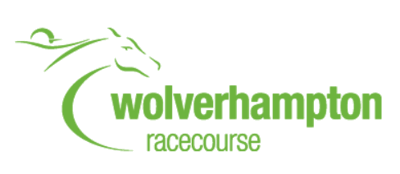 Wolverhampton racecourse is set in the heart of the West Midlands. The track has played an important role in the county since it opened in 1825 and since then has been able to host some mazing races.
Wolverhampton racecourse is set in the heart of the West Midlands. The track has played an important role in the county since it opened in 1825 and since then has been able to host some mazing races.
Given that the track is one of few all-weather tracks in the UK, it’s been able to host both flat and National Hunt racing on their turf. But, they now no longer offer National Hunt racing and have done away with the turf in order to offer a Tapeta surface. Interestingly, the surface is one of a kind in the UK and the surface runs very much like it would if it were based in the US. This is something that a lot of UK trainers target if they are planning on running horses aboard, with the track being highly popular for this exact reason.
The course has recently been granted over £26 million in order to carry out some much-needed refurbishments at the track. As part of the deal they are looking to expand the on-course hotel, making it almost 3x as big and also include an on-course casino, which would be the first of its kind in the UK. In fact, interestingly enough, Wolverhampton was the first UK racecourse to offer floodlights, so they are not shy when it comes to be the first to offer a feature.
Worcester
Grand Stand Road, Worcester, WR1 3EJ | Website
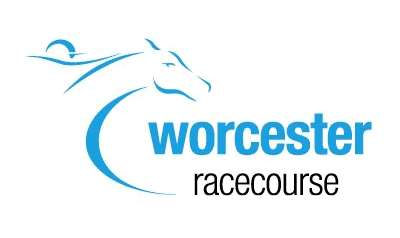 There are few better-looking racecourses in the UK than Worcester and with it holds one of the nation’s favourite National Hunt tracks. It’s often tough to keep these types of tracks looking great throughout the harsh winter months, but for some reason Worcester seem to be able to do it each year and have won several awards for doing so.
There are few better-looking racecourses in the UK than Worcester and with it holds one of the nation’s favourite National Hunt tracks. It’s often tough to keep these types of tracks looking great throughout the harsh winter months, but for some reason Worcester seem to be able to do it each year and have won several awards for doing so.
The course is based out of the county of Worcestershire and has been open since at least 1718, but many think it could be earlier than that. initially the course was actually set up for flat racing and this is all it held until 1966 when it controversially switched to that of National Hunt racing, something the locals weren’t all that keen on at first.
The site is commonly known as “Pitchcroft” and with it has hosted sports such as football and rugby for over a hundred years. The oval racecourse measures about 13 furlongs in total length, which makes it one of the smaller tracks in existence. The course is one of the toughest to run and the hurdles are pretty brutal as a result. The number of fatalities at the track has been high with 45 horses dying between 2007 and 2016.
York
Knavesmire Road, York, YO23 1EX | Website
 York racecourse is without doubt one of the biggest in the country and the biggest in the North of England. The track is able to boast that it’s the third biggest racecourse in the country in terms of total prize money and also that only Ascot is able to offer more prize money per meeting than York, such is the importance of this racecourse.
York racecourse is without doubt one of the biggest in the country and the biggest in the North of England. The track is able to boast that it’s the third biggest racecourse in the country in terms of total prize money and also that only Ascot is able to offer more prize money per meeting than York, such is the importance of this racecourse.
The course is based in North Yorkshire, not far from the town centre of York, with regular bus and train links to the track. It hosts over 350,000 people each year and all this bearing in mind that they only offer flat racing throughout the spring, summer and autumn months. Racing has been taking place at the site since Roman times and whilst the official date of when it was first started on the current site is unknown, it’s commonly thought of to be around 1730, such is the heritage of the sport within the area.
The standout festival on track is that of the Ebor Festival, which takes place every year in August. All three of the Group 1 races that are held at the racetrack throughout the year are held at the Ebor, which includes the International Stakes, Yorkshire Oaks and the Nunthorpe Stakes.
Whilst all three are massively important races, the International Stakes probably just takes the crown as the biggest, mainly because it has a purse of £1,000,000, which is more than double of the other two races combined. Some amazing horses have won the race previously, including the likes of Frankel, Sea The Stars, Authorized, Giant’s Causeway, Halling, Ezzoud and Dahlia, to name just a few.
